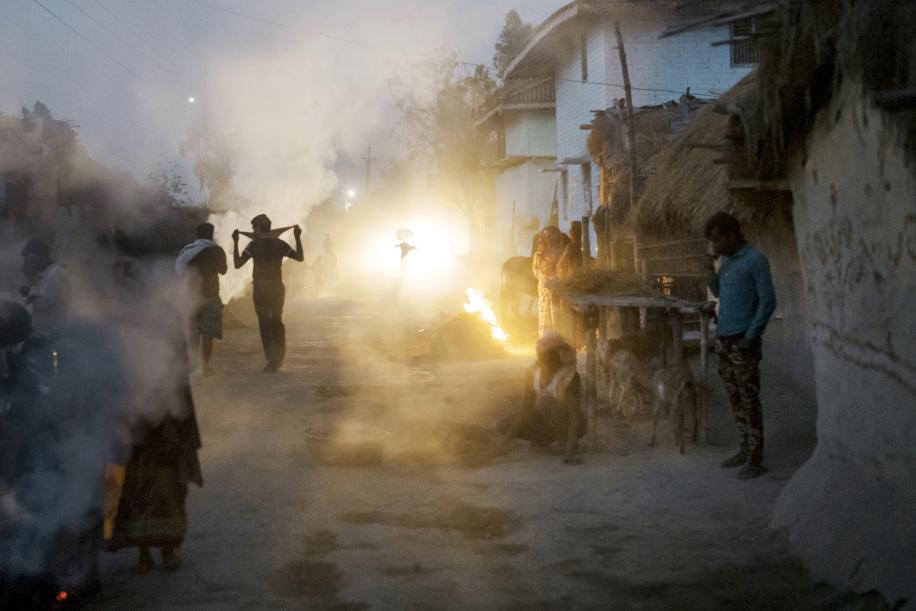

Noukailawa, Nepal
Smoke rises from fires as villagers clean the main street at night by burning waste in Noukailawa village. The settlement is inhabited mostly by members of the Mushahar dalit cast. An estimated 40 percent of the villagers do not have Nepalese citizenship and are therefore stateless. Citizenship is hard for the Mushahar to obtain due to discrimination and the difficulty they have getting all the documentation needed to prove they are Nepalese. Being stateless leaves them vulnerable to poverty and exploitation.
Make Comment/View Comments
Additional Credits
Video
Photographer Statement
License
To license this work for editorial, creative, or other uses, click on the OZMO logo above.
This will take you to the Ozmo website retro toys where you can review the cost and license for the photographs in this exhibit.
You will need to create an account with both Amazon payments and with the Ozmo website as described on the Ozmo website.
Tags
Content loading...
Resources
Affiliated NGO
Contact Photographer
@williamodaniels
williamodaniels@gmail.com
www.williamdaniels.net
Stats
THE STATELESS
William Daniels | Lebanon, Dominican Republic, Nepal, Ivory Coast, Bangladesh
Photographer: William Daniels
Exhibit Title: THE STATELESS
Location: Lebanon, Dominican Republic, Nepal, Ivory Coast, Bangladesh
What happens when a person’s identity is negated to the point that they are deprived of any official existence? This person becomes stateless: they do not belong to any country – not even the one they consider their own. Most of the world’s 10 million stateless people do not feature in any census. They are seldom refugees: many have never left the land on which their ancestors were born.
The question of who belongs and who does not, who has access to resources and who should be denied them, is a hot topic in our times of pervasive identity crises and populism fueled by social media. The philosopher Hannah Arendt wrote that citizenship is “the right to have rights”; in The Origins of Totalitarianism, she described the process of dehumanization of stateless people: when “Others” are created and differences are exploited, citizenship becomes an instrument to deprive of rights those who could threaten political, ethnic or economic interests.
I have been meeting stateless communities, or “at risk of statelessness” in 6 countries.
What happens when a person’s identity is negated to the point that they are deprived of any official existence? This person becomes stateless: they do not belong to any country – not even the one they consider their own. Most of the world’s 10 million stateless people do not feature in any census. They are seldom refugees: many have never left the land on which their ancestors were born.
The question of who belongs and who does not, who has access to resources and who should be denied them, is a hot topic in our times of pervasive identity crises and populism fueled by social media. The philosopher Hannah Arendt wrote that citizenship is “the right to have rights”; in The Origins of Totalitarianism, she described the process of dehumanization of stateless people: when “Others” are created and differences are exploited, citizenship becomes an instrument to deprive of rights those who could threaten political, ethnic or economic interests.
I have been meeting stateless communities, or “at risk of statelessness” in 6 countries.
@williamodaniels
williamodaniels@gmail.com
www.williamdaniels.net
Content loading...
Make Comment/View Comments

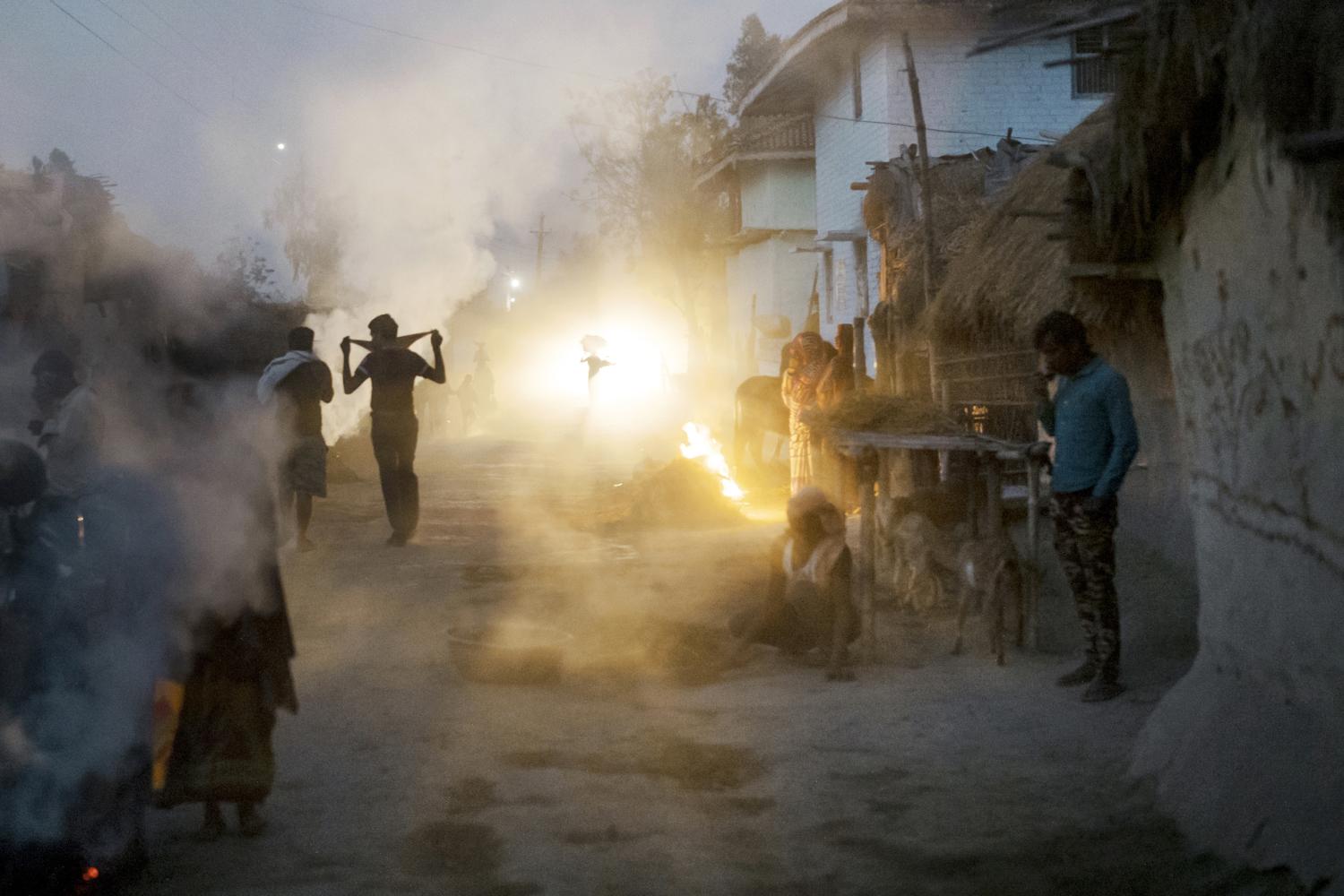
Noukailawa, Nepal Smoke rises from fires as villagers clean the main street at night by burning waste in Noukailawa village. The settlement is inhabited mostly by members of the Mushahar dalit cast. An estimated 40 percent of the villagers do not have Nepalese citizenship and are therefore stateless. Citizenship is hard for the Mushahar to obtain due to discrimination and the difficulty they have getting all the documentation needed to prove they are Nepalese. Being stateless leaves them vulnerable to poverty and exploitation.
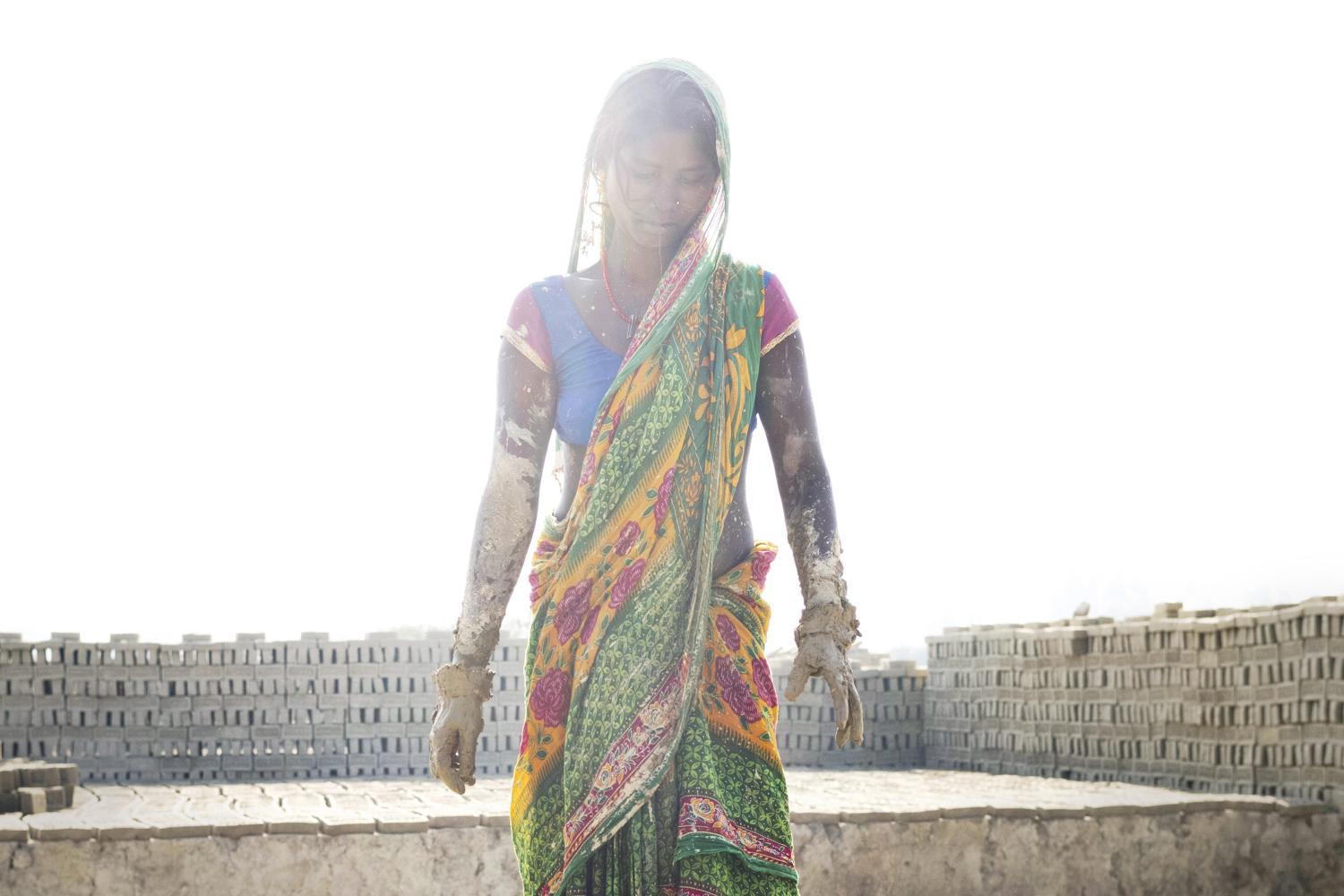
Noukailawa, Nepal Dukhiya Devi Majhi is stateless Mushahar, like her husband and two children. She works in a brick factory where she is paid 275 Rupees (GBP 1.75) for each 1,000 finished bricks. Her children help sometimes so they don’t go to school. It takes one day for two people to make 1,000 bricks but if rain damages the bricks they are not paid. The Mushahar are one of the most discriminated against of the 22 groups of Dalits. Citizenship can be hard for them to obtain due to discrimination and the difficulty they have getting all the documentation needed to prove they are Nepalese.
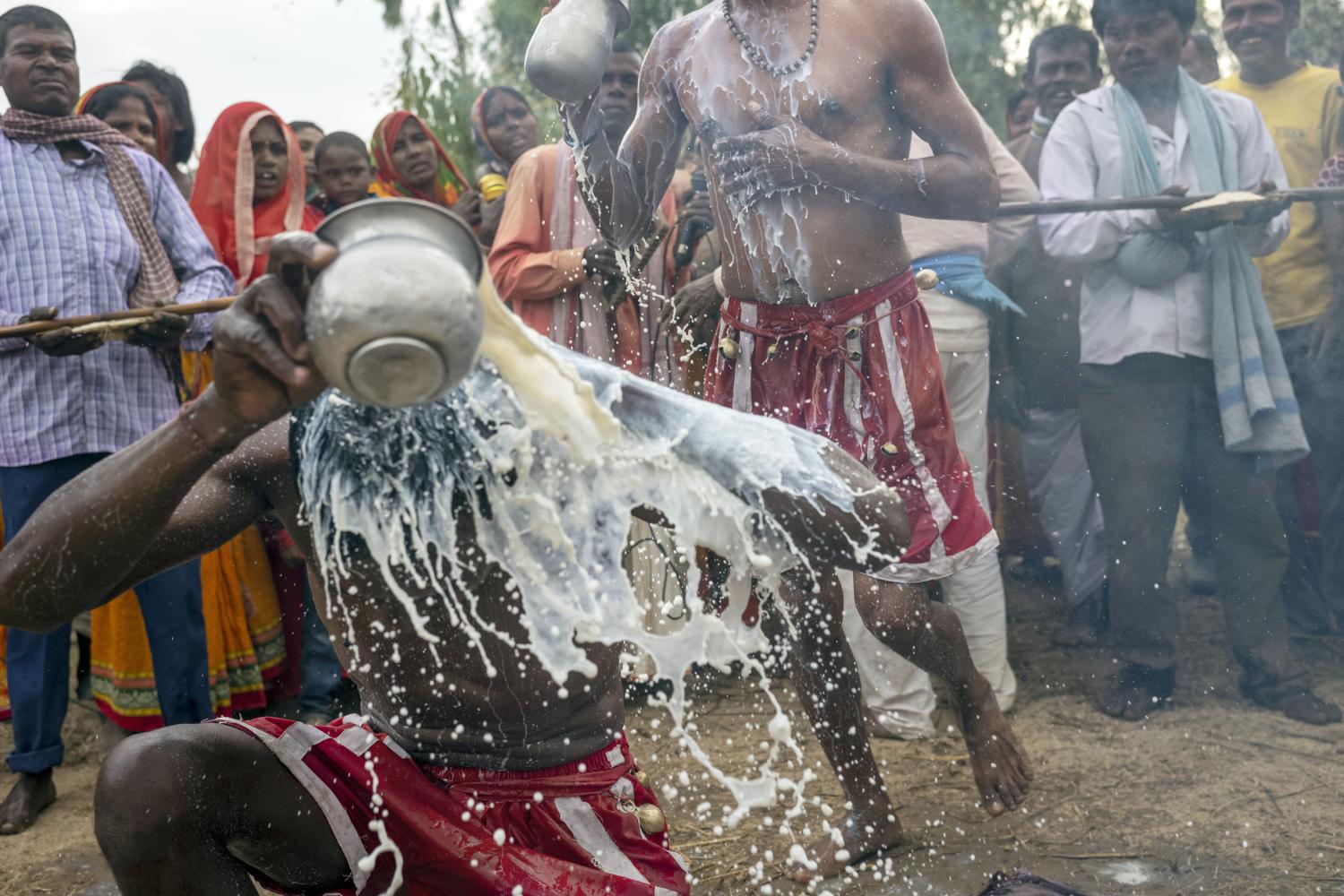
Barkuruwa, Nepal Two men pour boiled milk over their bodies during the 'Worship of Bhuiya Maharaj', a ritual that is a symbol of resistance to discrimination against the Mushahar who are Dalits ( untouchables ) and one of the most discriminated against. According to legend, a powerful landlord named Jhurawar Singh was cruel to the people of his village. He would not let a bride walk through his property without forcing her to spend a night with him before allowing her groom to take her home. A brave man called Bhiuya disguised himself as a bride and killed Jhurawar Singh. Now people celebrate the day by worshiping him by offering him milk. Although the milk is boiling those taking part never get hurt and it is believed that they have magical power in them.
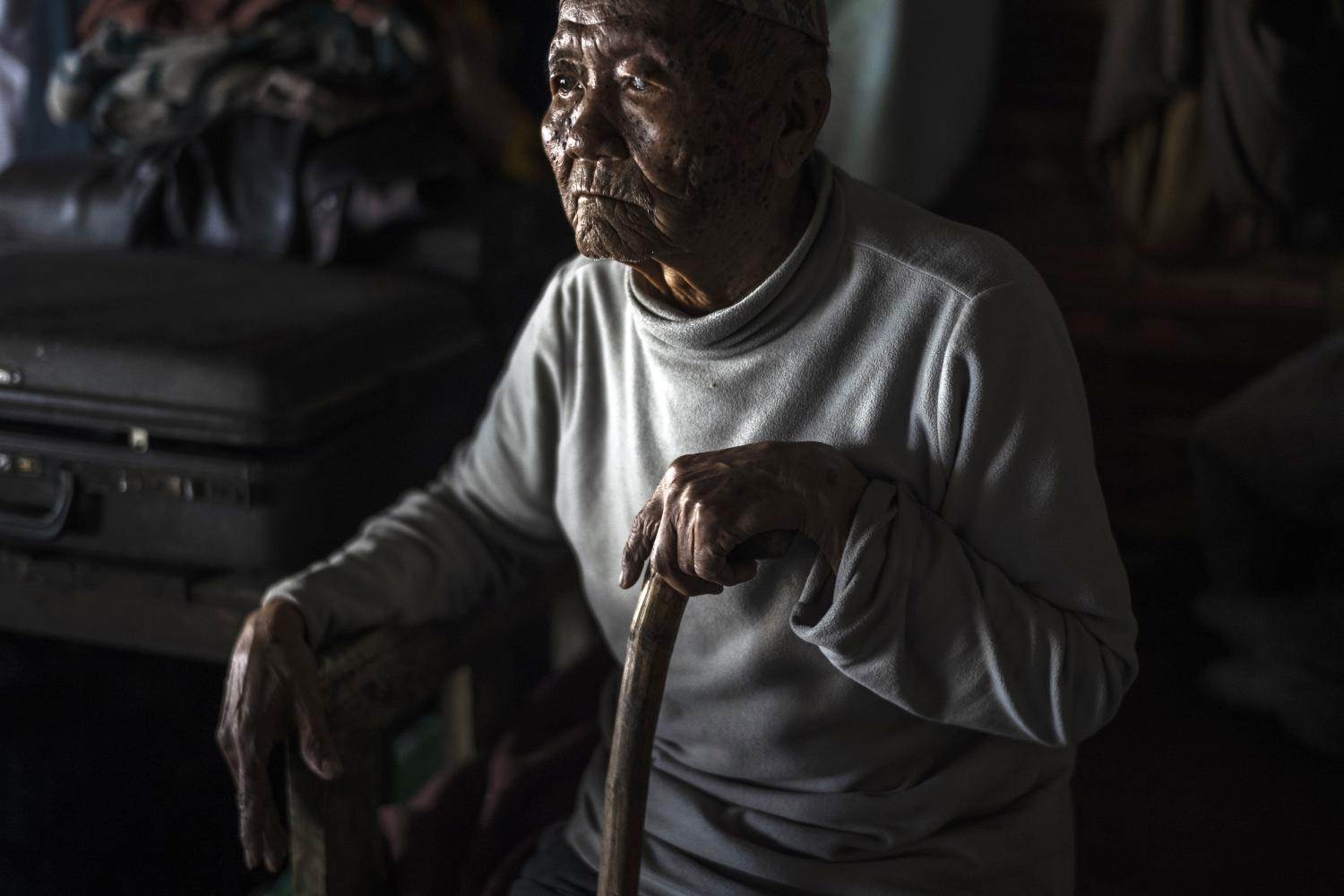
Jhapa District, Nepal Bir Bahadur Rai Bayang (86) is a Bhutanese refugee. He has been stateless and living for 27 years in Belgandi refugee camp, in eastern Nepal. In the 1990s, Bhutan expelled some hundreds of thousands of people of Nepali descent after stripping them of their citizenship (for purposes of maintaining Bhutanese 'purity'). They ended up in refugee camps in eastern Nepal. Many have been relocated to the USA but around 6,500 still languish in camps.
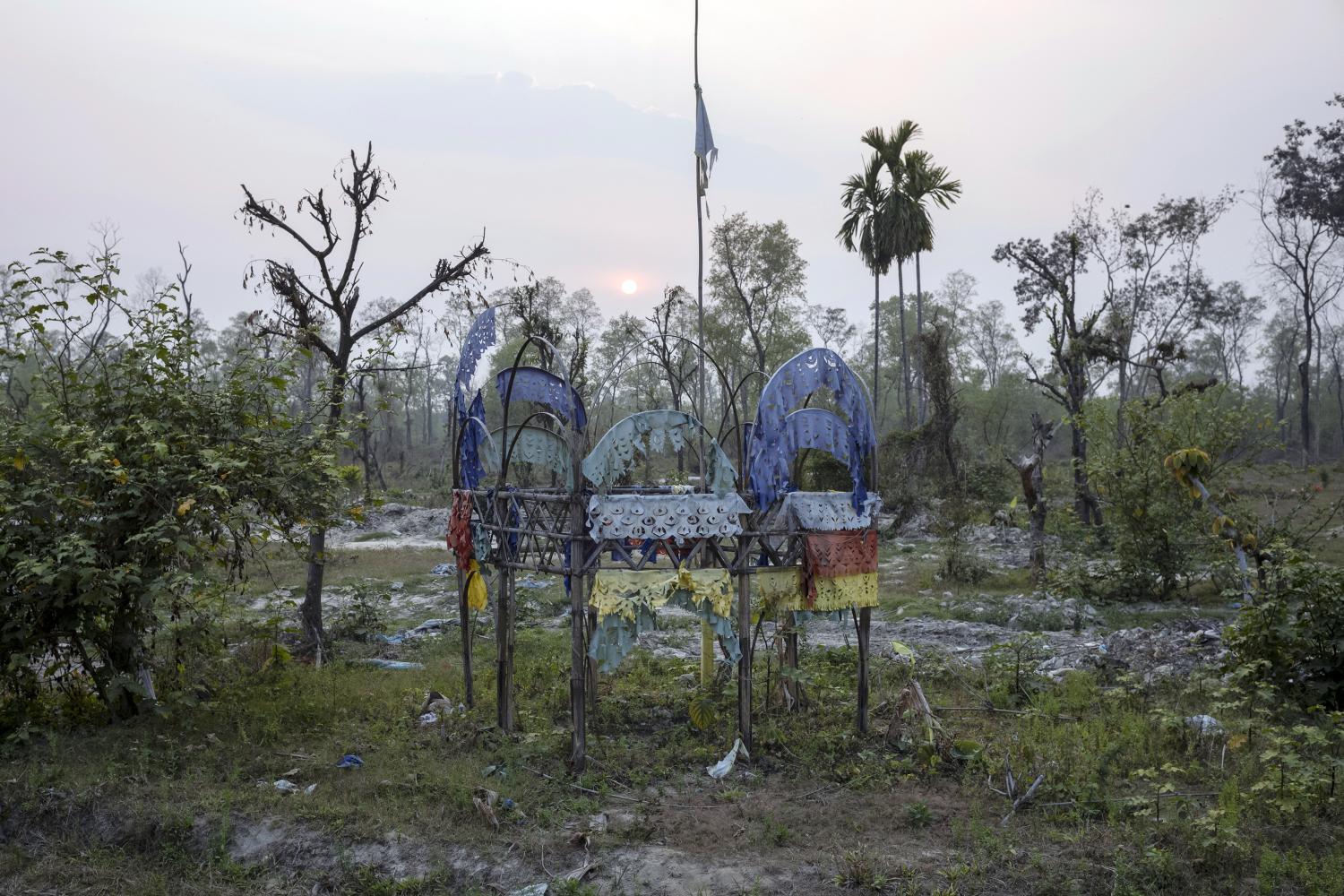
Jhapa District, Nepal The remains of a Hindu temple in an abandoned area of Belgandi camp, where Buthan refugees use to live but have been relocated to western countries. In the 1990s, Bhutan expelled some hundreds of thousands of people of Nepali descent after stripping them of their citizenship. They ended up in eastern Nepal. Many have been relocated to the USA but around 6,500 still languish in camps.
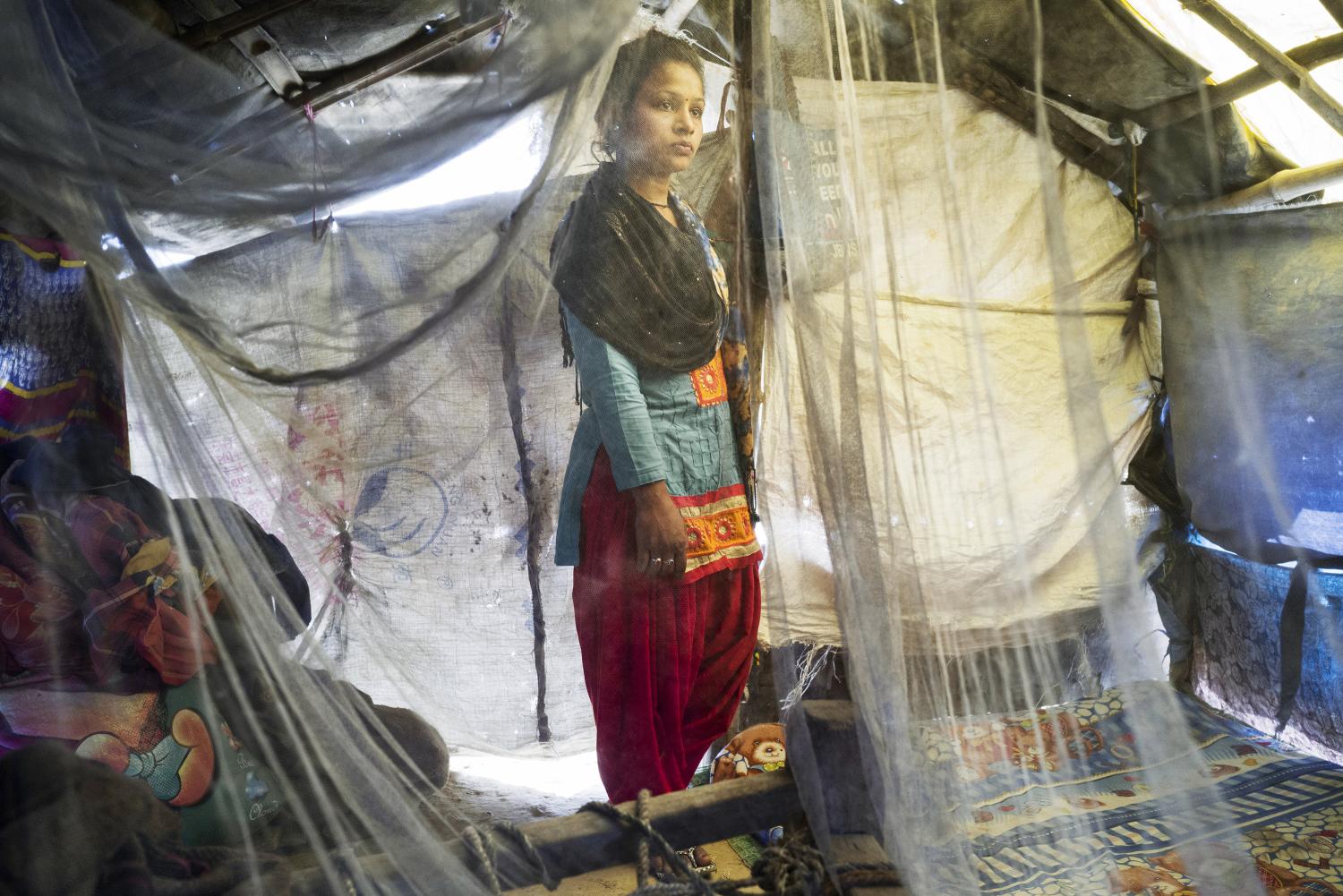
Nepalgunj, Nepal Sapana Badi (21) who belongs to the Badis, a subgroup of Nepalese untouchables ( Dalits ), once responsible for entertaining members of the upper castes of country with song and dance. The majority of the women were also formerly involved in the sex trade and this is still the case of a minority of them today. Without papers, Sapana, who is stateless, could not escape this vicious circle and prostitutes herself in order to earn her life.
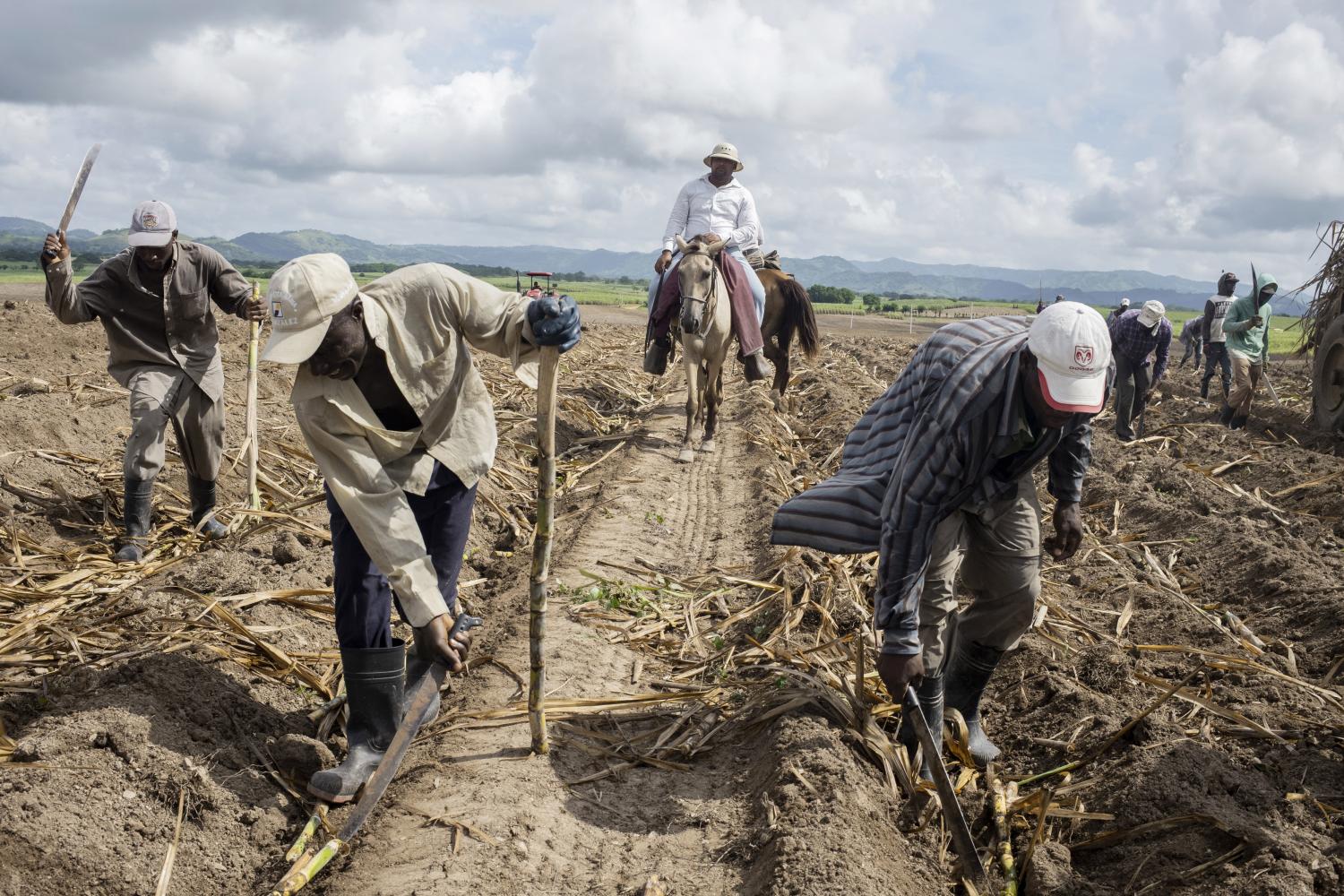
Near La Romana, Dominican Republic In the Dominican Republic, the sugarcane sector uses a majority of Haitian descent workers most of whom have lived in the country for several generations. These latter were considered as Dominicans, under of the law of the soil. But, in 2013, the Constitutional court revoked the citizenship of Dominicans of Haitian origin. Due to the international outcry, the authorities have reviewed their status and reinstated half of them, but the others remain stateless. The initiative was introduced against a backdrop of growing pressure from ultranationalist groups who denounce the increase of Haitian migrants in the country.
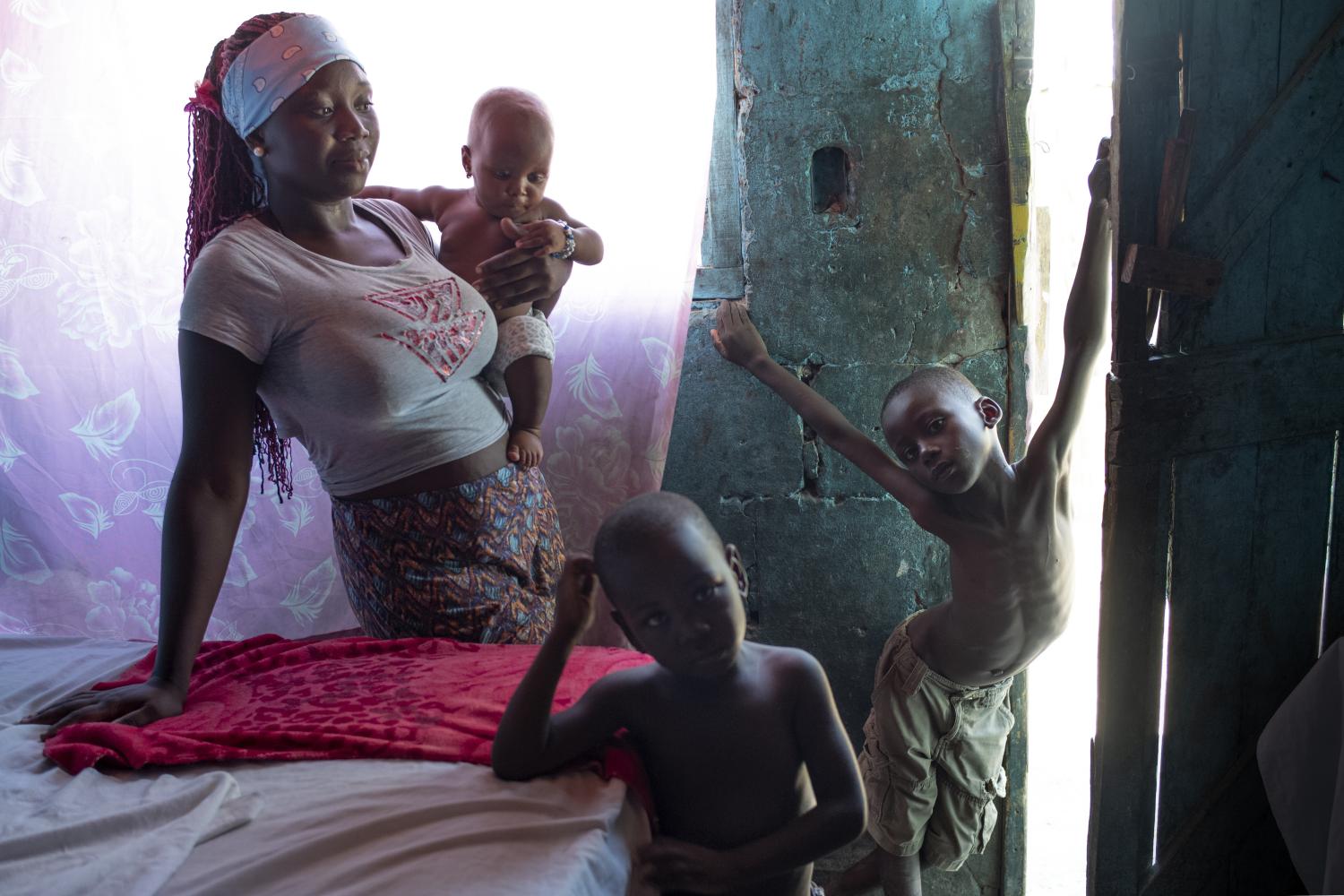
Western Dominican Republic Francesca (not her real name) and her three children, five, four and eight months are of Haitian descent but born in Dominican Republic. Following the Constitutional court decision in 2013, they lost their Dominican citizenship and are now stateless. She applied to the regularisation plan in 2014 and received a card which had her nationality recorded as Haitian although she has never been to Haiti and the Haitian authorities have no record of her. She could be arrested and deported as an illegal migrant.
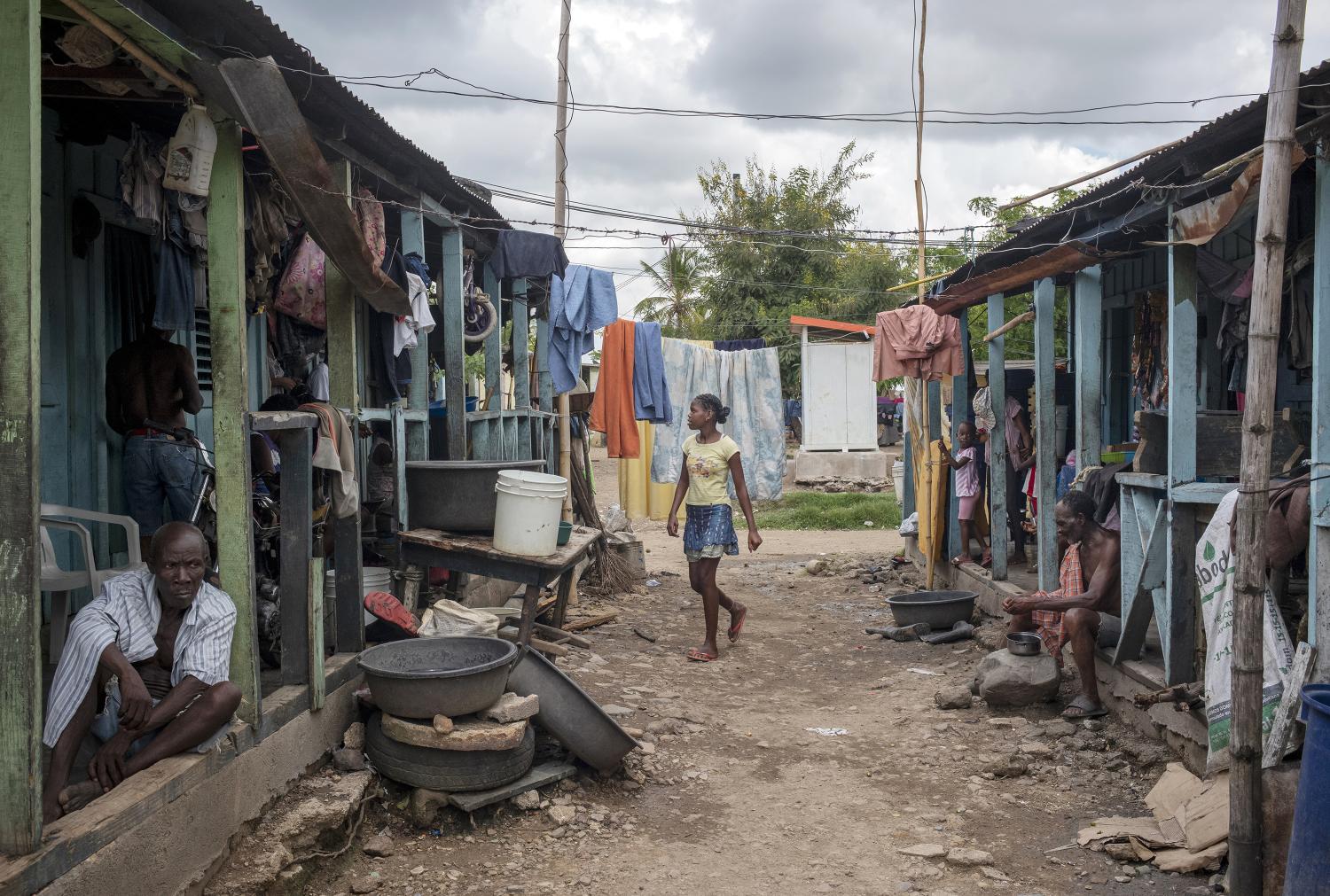
Batey El Prado, Dominican Republic People of Haitian descent sit outside their decrepit houses in Batey El Prado, which is owned by the Company Central Romana Corp. Conditions are bad and the people are very poor. In all private bateys, owned by a cane company, there must be at least one man from a household working in the cane fields in order to live in a house. Many would like to get a better paid job but it is difficult if they don't have correct documents and even if they got a better paid job they may not be able to accept it because they will loose the house.
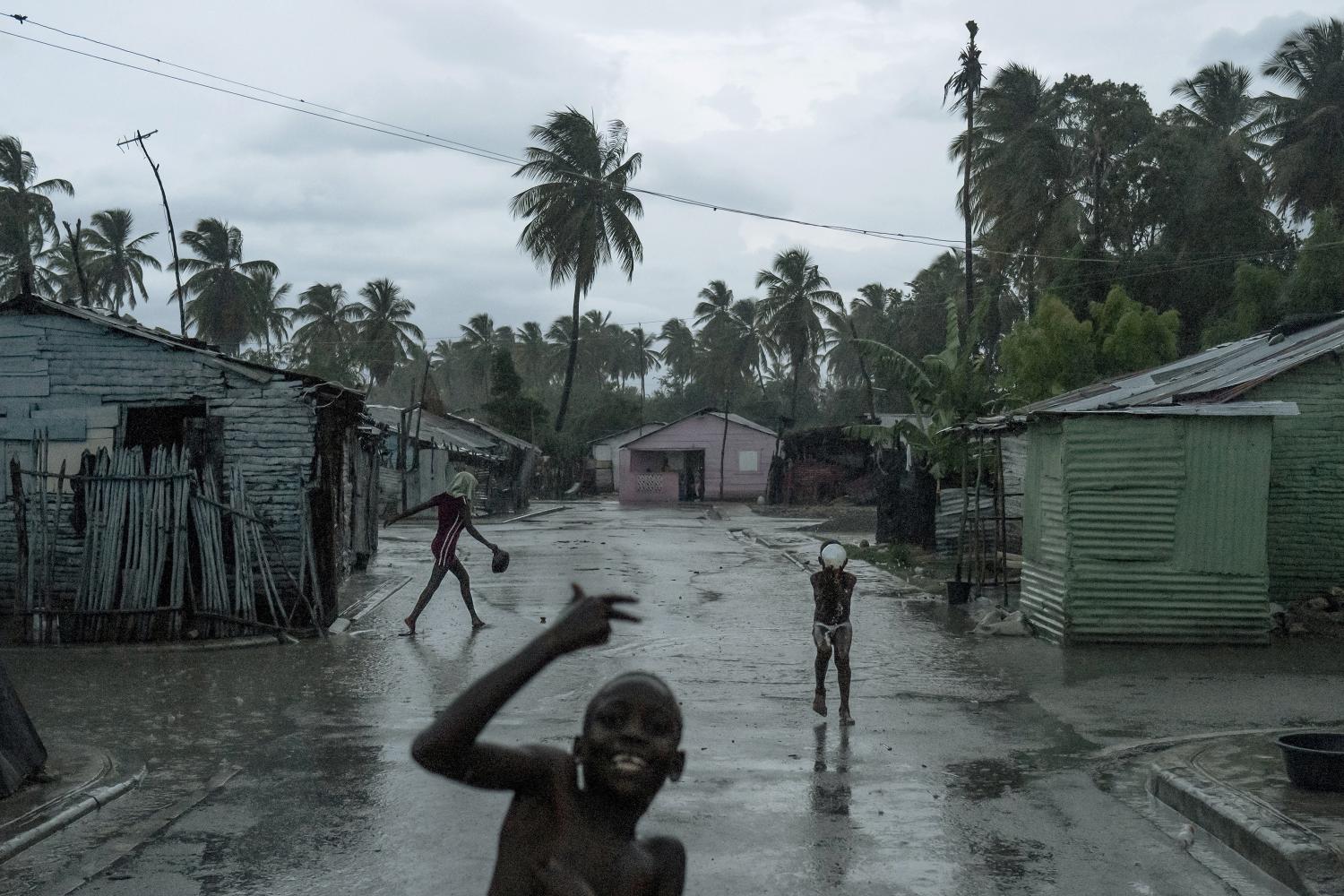
Batey Bombita, Dominican Republic Children of Haitian decent playing in the rain.
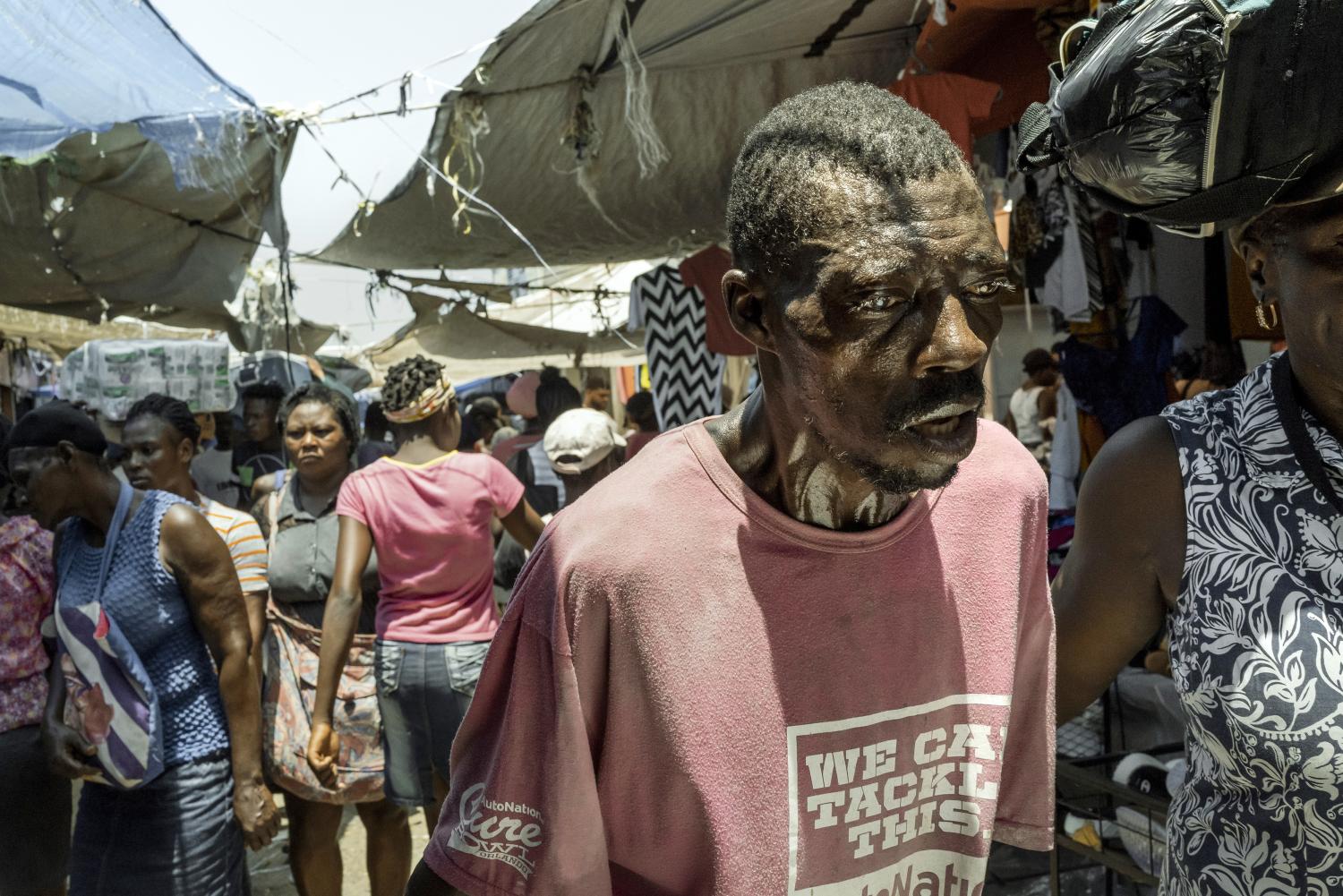
Dajabon, Dominican Republic Dajabon Market where, twice a week, Haitians are permitted to cross the border into the Dominican Republic without immigration controls to trade at the market. Haiti is the second-biggest market for Dominican goods, after the US, and Dajabon is the biggest commercial crossing and the third-largest economic generator in the DR after tourism and sugar. The river separating the two countries is nicknamed the 'Massacre River' from a colonial-era slaughter of French buccaneers, but it ran red with blood again in 1937 after the Dominican dictator Rafael Trujillo ordered the mass killing of Haitians. There are many immigration controls outside of the city to prevent illegal Haitian migrants reaching other parts of the country.
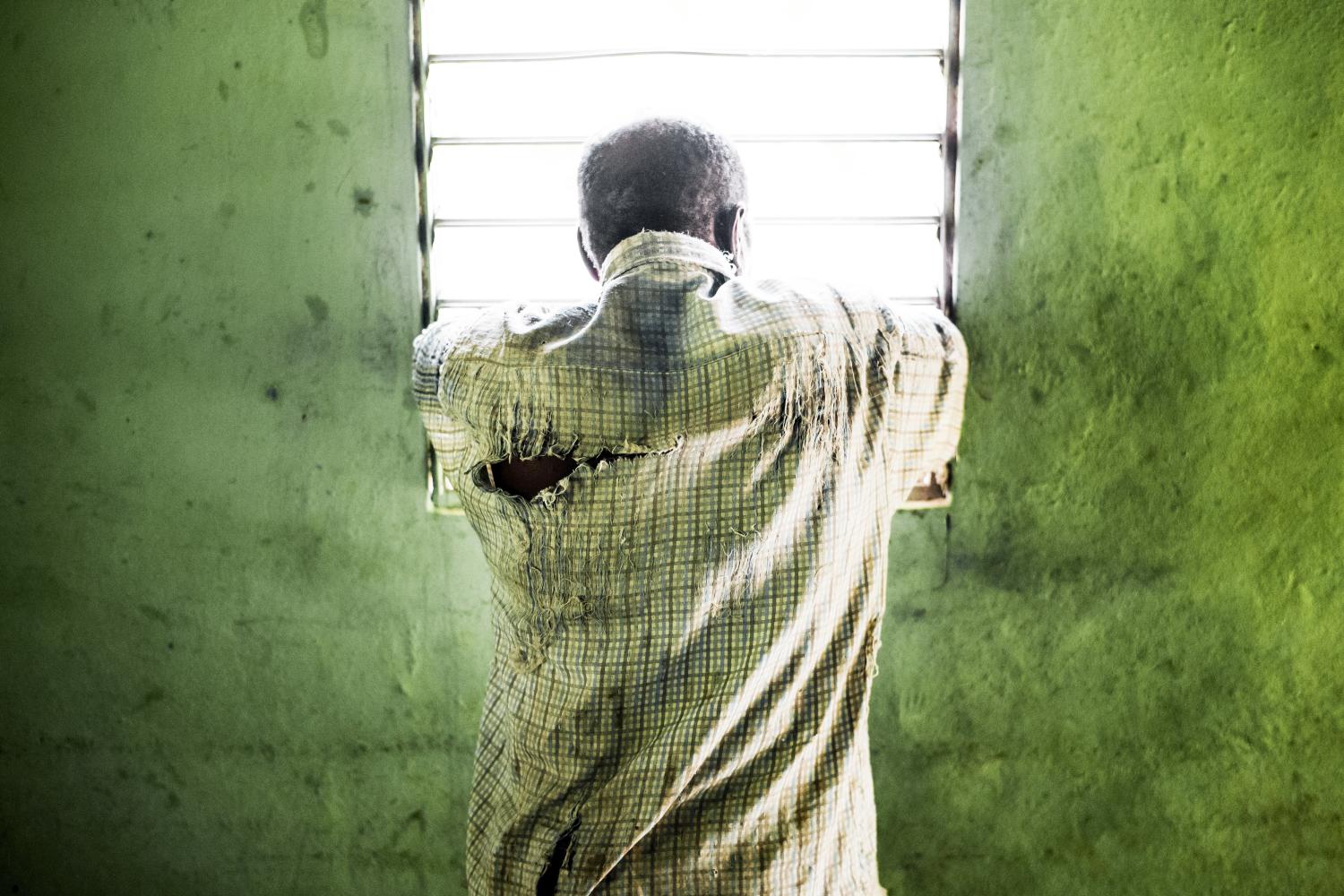
Central Dominican Republic Haitian descendant in a Batey owned by the company Central Romana Corporation (the biggest Cane company in DR). Recently the US banned any sugar coming from Central Romana for suspicion of Forced labour.
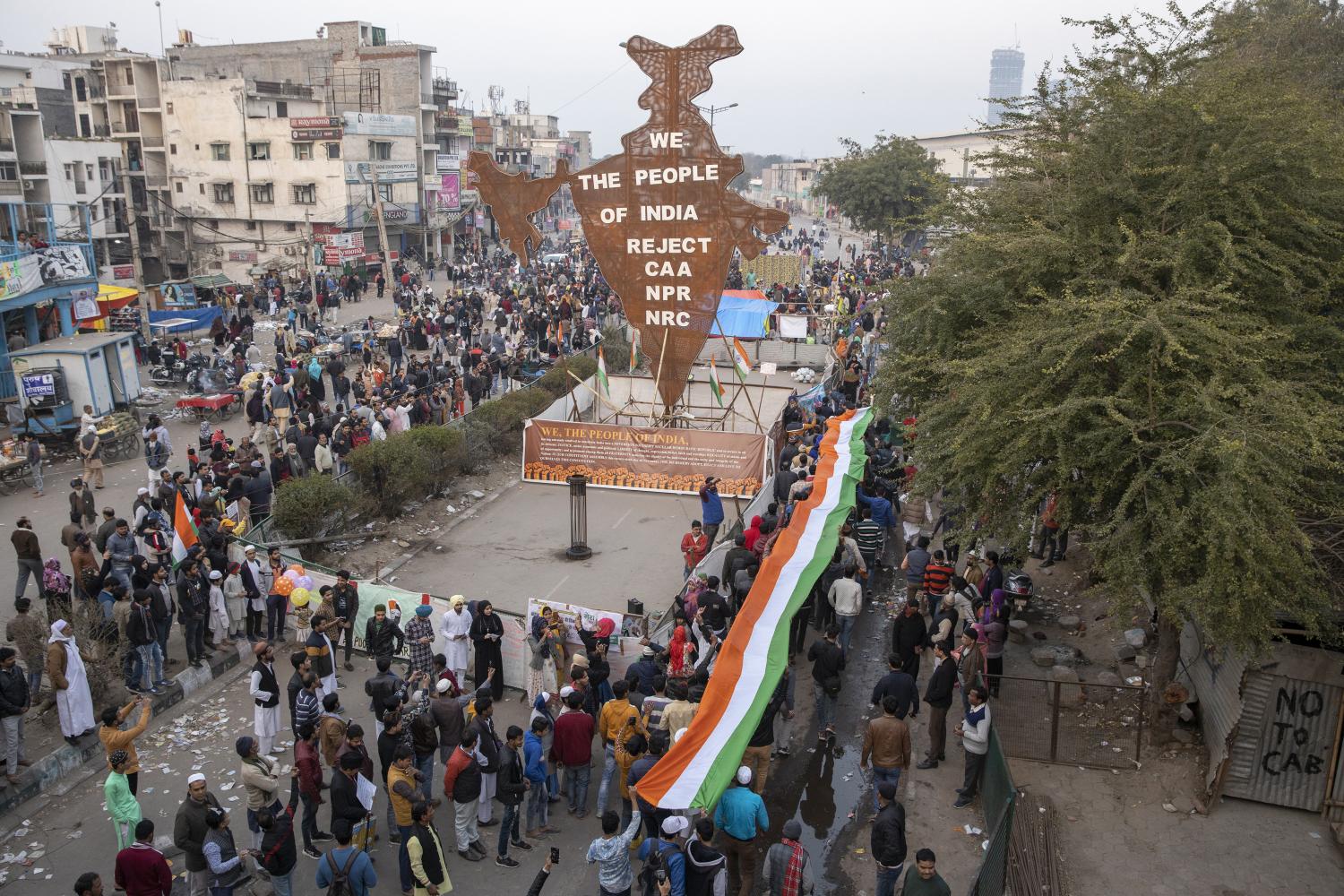
New Delhi, India. In New Delhi, Muslim gathered to protest against the Citizenship Amendment Act (CAA), in February 2020. The act facilitate access to citizenship for any Hindu, Christian, Buddhist, Sikh, Zoroastrian or Jain who fled Afghanistan, Bangladesh or Pakistan because of religious persecution. Muslims are excluded from the system. With this Act, religion becomes a criterion to access citizenship, for the first time in this multi-faith and secular country, led by the ultranationalist Prime Minister Narendra Modi. A few months before adoption of the CAA, a census in Assam state led to the exclusion of hundreds of thousands of Muslims, who will find themselves stateless if they cannot prove their presence in the country before 1971.
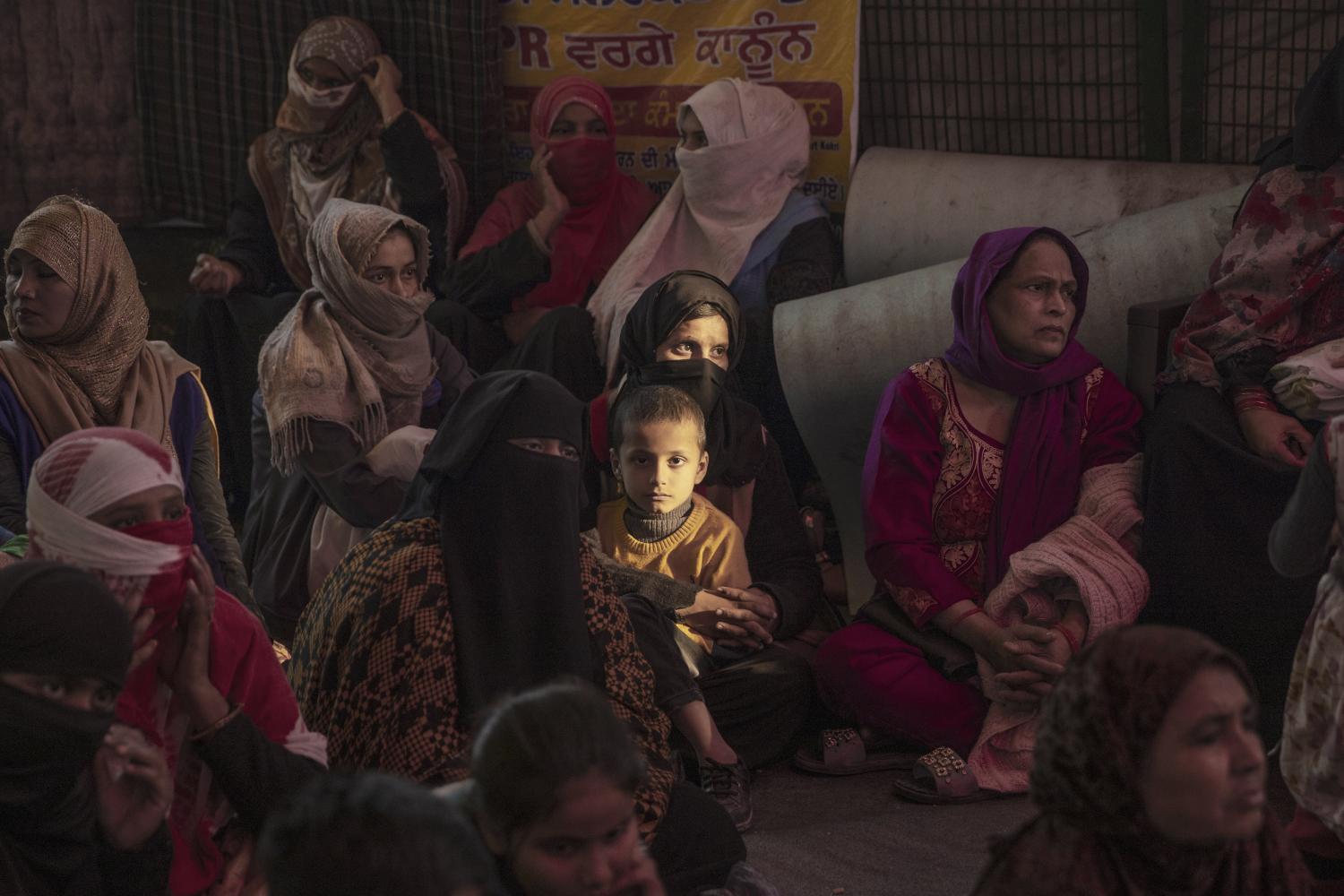
New Delhi, India. In New Delhi, Muslim women gathered to protest against the Citizenship Amendment Act (CAA), in February 2020.The protest was first led by women who blocked a major road at Shaheen Bagh neighbourhood using non-violent resistance.
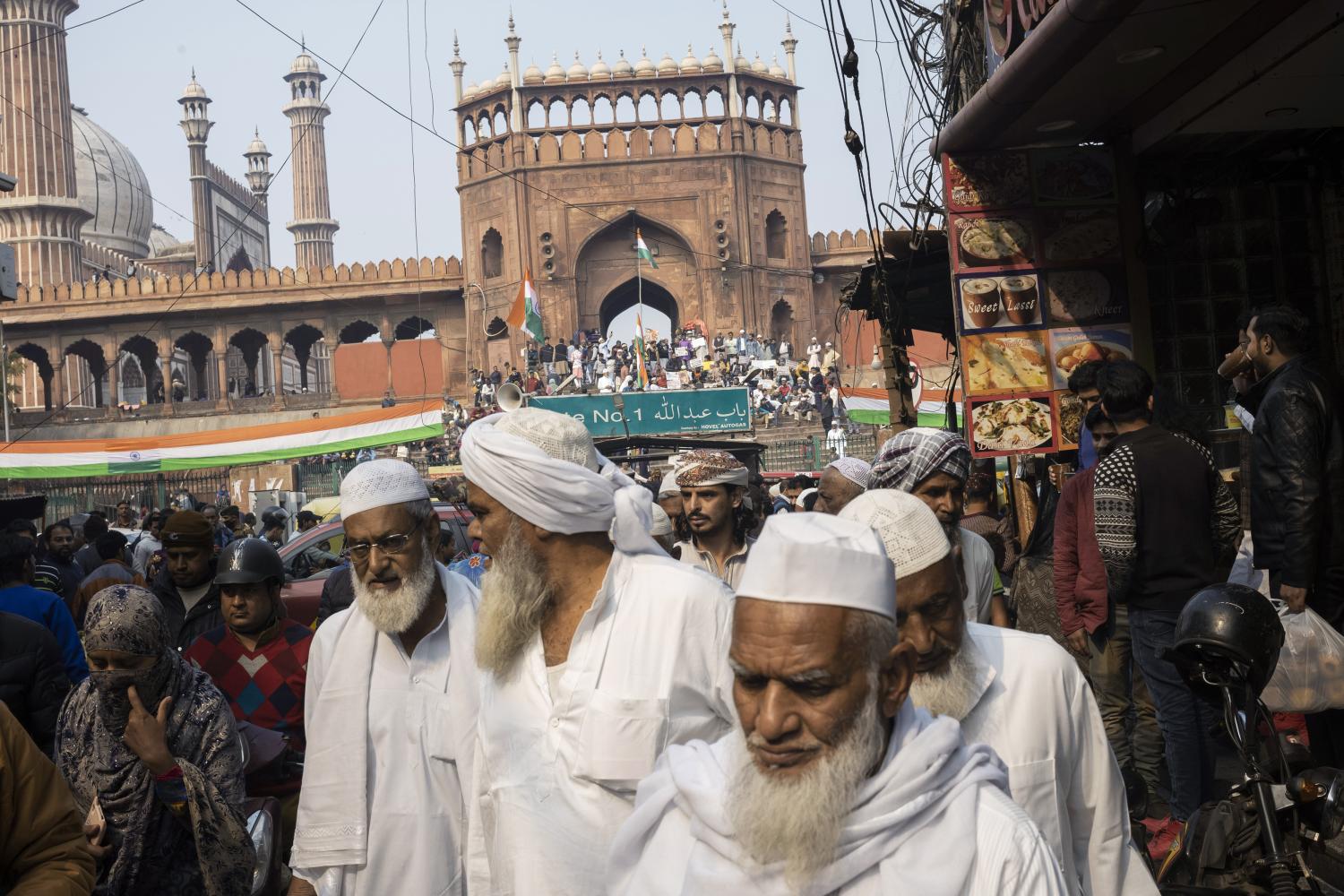
New Delhi, India. Muslim neighborhood of Chandni Chowk in old Delhi, On the background, Indian Muslims demonstrate against the Citizenship Amendment Act (CAA), by the gate of the Jama Masjid Mosque, one of the largest in India. Since ultranationalist Narendra Modi became Prime Minister in 2014, the violence against Muslims increased across the country. With his re-election in 2019, discrimination took an institutional turn. Beside the CAA, a census in Assam state led to the exclusion of hundreds of thousands of Muslims, who will find themselves stateless if they cannot prove their presence in the country before 1971.
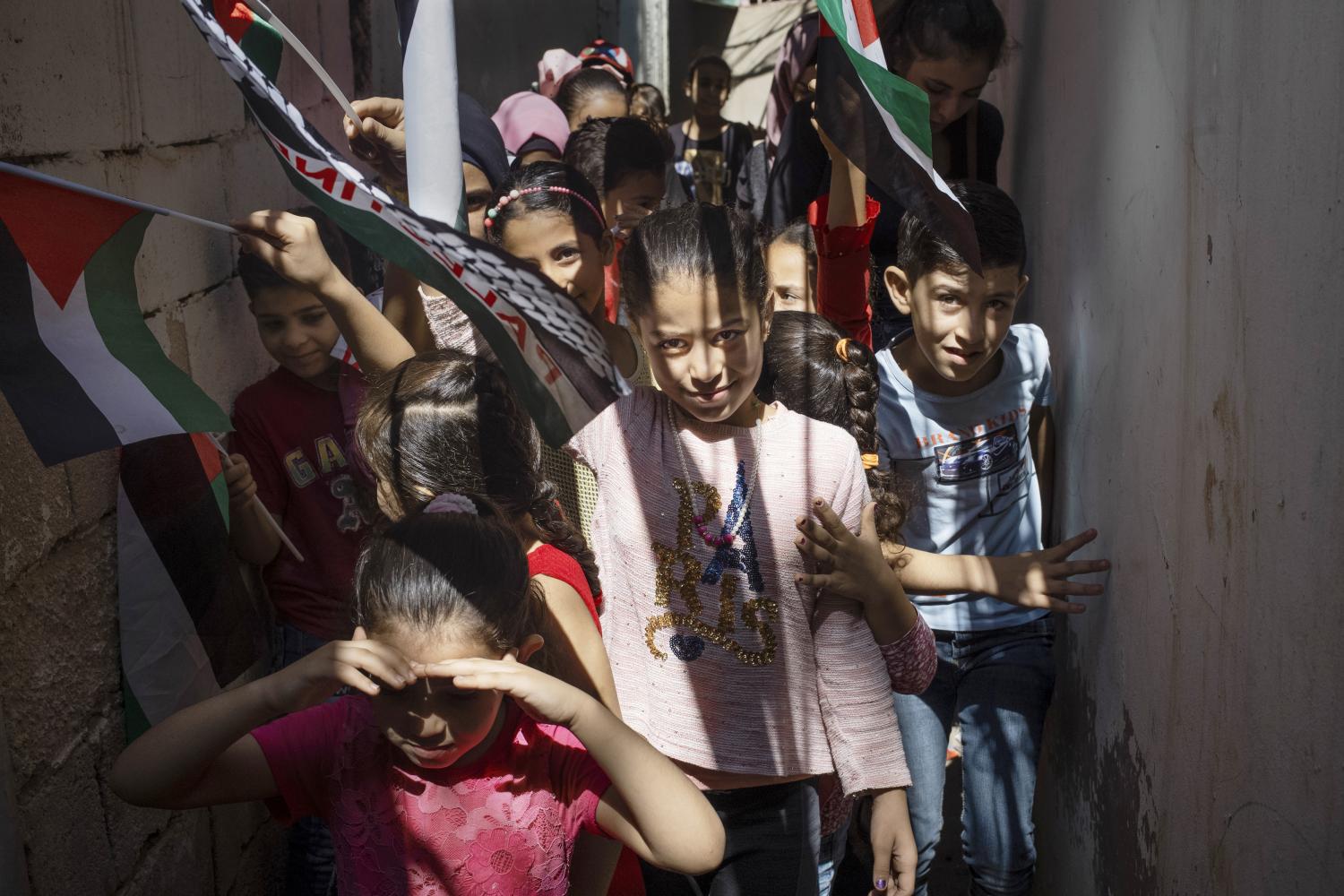
Beirut, Lebanon Children holding Palestinian flags during a demonstration in Burj Barajneh Palestinian refugee camp, to complain of the lack of services provided by the UN. During the 1948 Arab-Israeli war, thousands of Palestinians were forced to flee to Lebanon. Today, 180 000 are estimated to be residing in the country by the UNRWA (the UN refugee agency that works with Palestinian refugees in Lebanon). Authorities Fear that integrating Palestinians would disrupt the country’s delicate sectarian equilibrium, so even after 3 generations born in Lebanon, they are still considered as foreigners. Palestinians in Lebanon do not enjoy several important rights; for example, they cannot work in as many as 39 professions and cannot own property (real estate). Because they are not formally citizens of another state, Palestine refugees are unable to claim the same rights as other foreigners living and working in Lebanon.
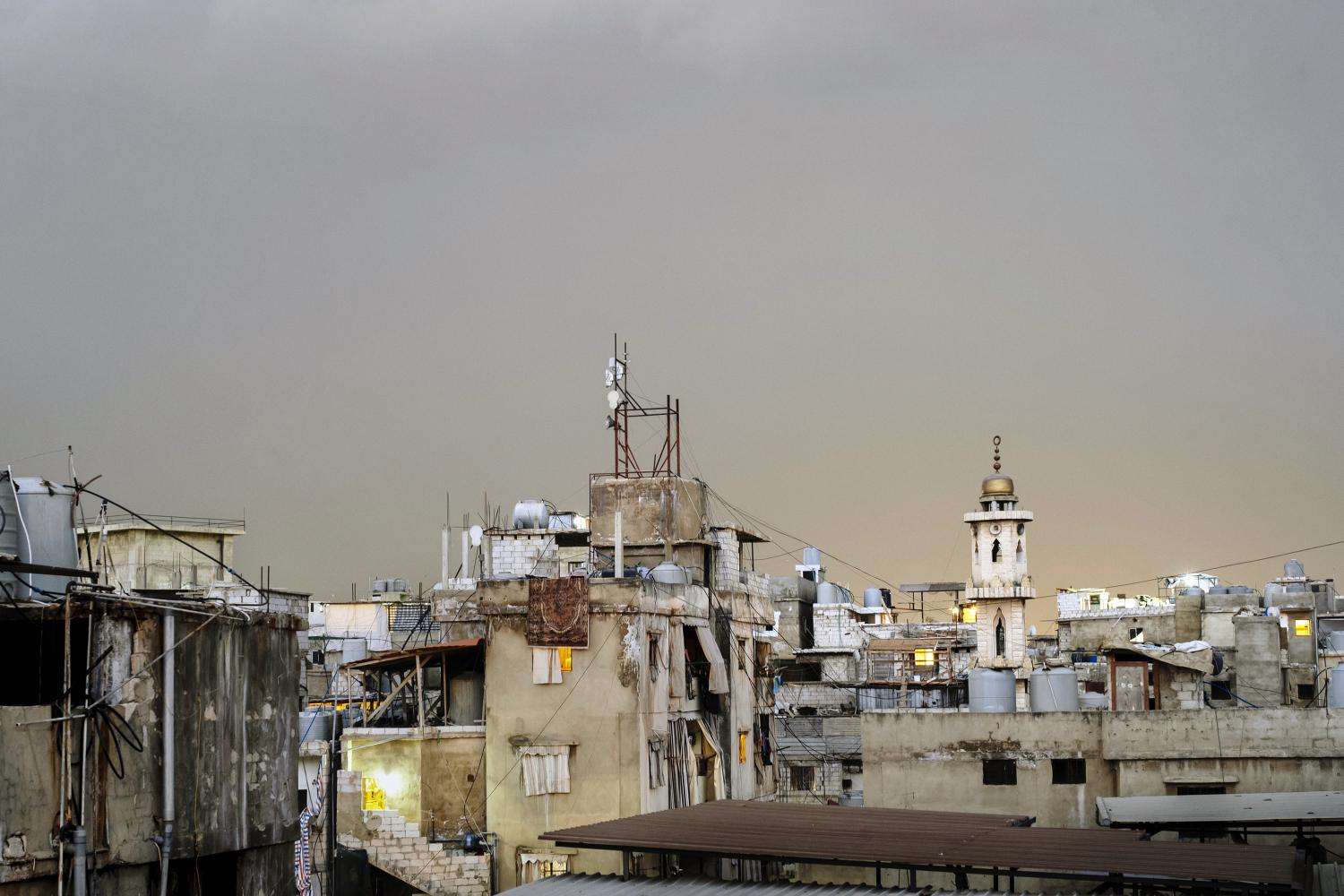
Beirut, Lebanon Storm clouds over Shatila Palestinian refugee camp, established in 1949. Half of Palestinian in Lebanon are dispatched in between the country’s 12 overcrowded refugee camps. Initially comprised of around 500 residential units, the camp has grown tenfold since its establishment. Most of the growth has been vertical, with new shelters being erected on top of existing ones without proper foundations. Shatila camp and the adjacent neighbourhood of Sabra in Beirut were the scene of a massacre on 16 -18 September 1982 that claimed the lives of a large number of Palestinian and Lebanese civilians.
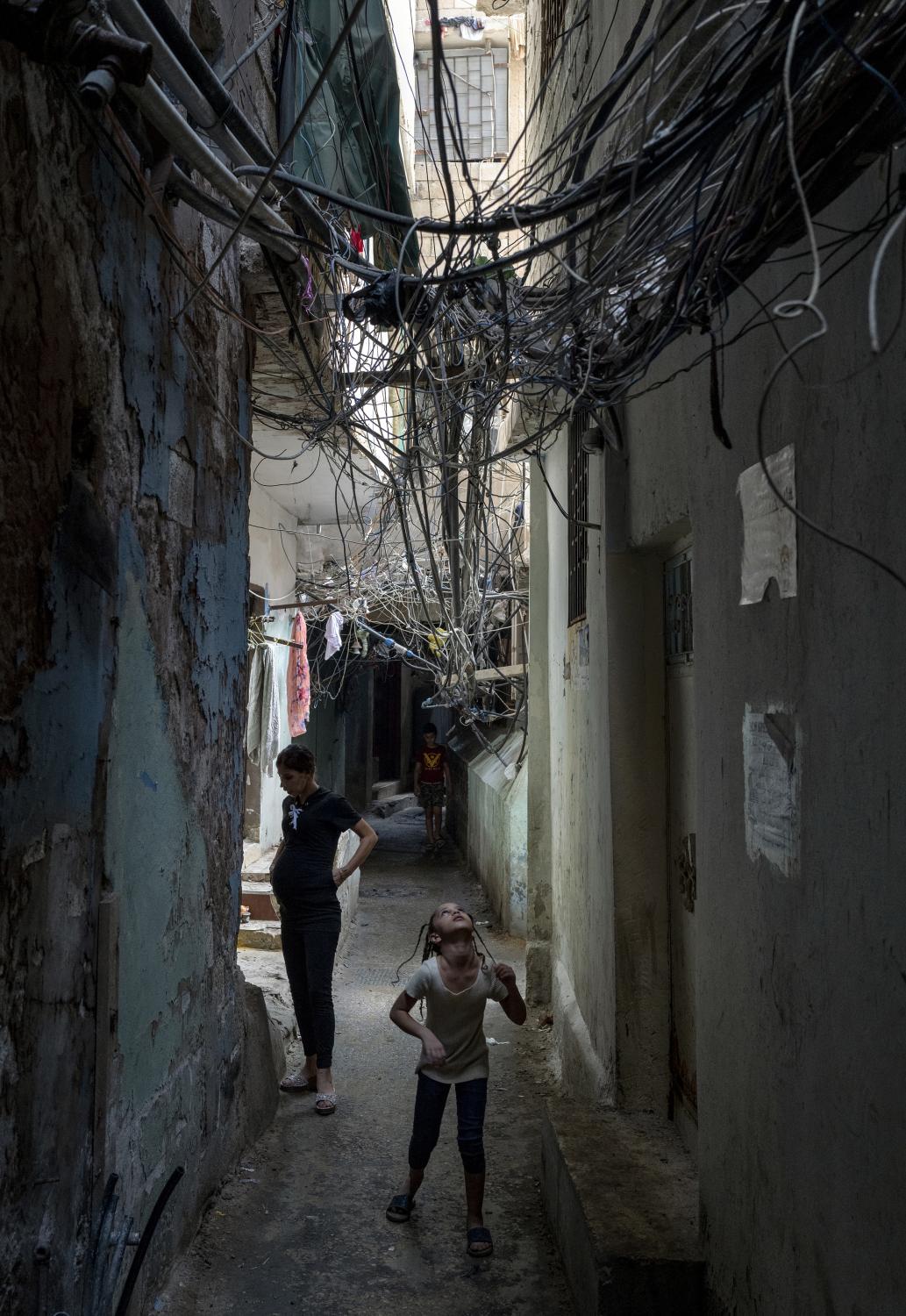
Beirut, Lebanon A mass of power and communications cables in Shatila Palestinian refugee camp, established in 1949. Conditions in the camps are dire and characterised by overcrowding, poor housing conditions, unemployment, poverty and lack of access to justice. Building work was undertaken randomly, with no opportunity to increase the foundations. Roads became extremely narrow and infrastructure was put under heavy stress.
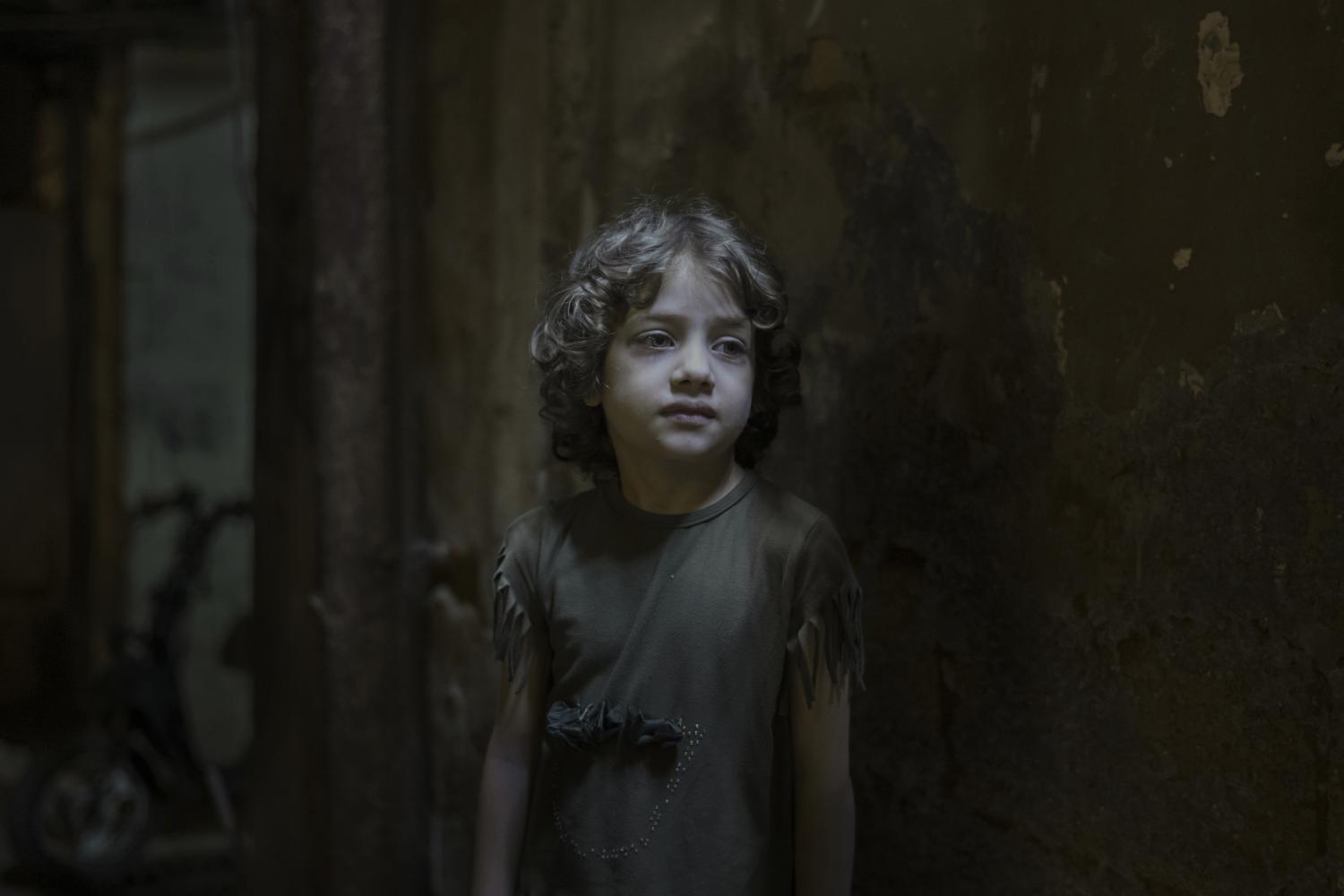
Beirut, Lebanon Alya, a child living in Burj Barajneh Palestinian refugee camp. In the camp, the poorest are relegated to the bottom streets where the twilight is such that the children growing up there lack natural light and suffer vitamin D deficiencies, according a local mission of MSF (Doctors without borders).
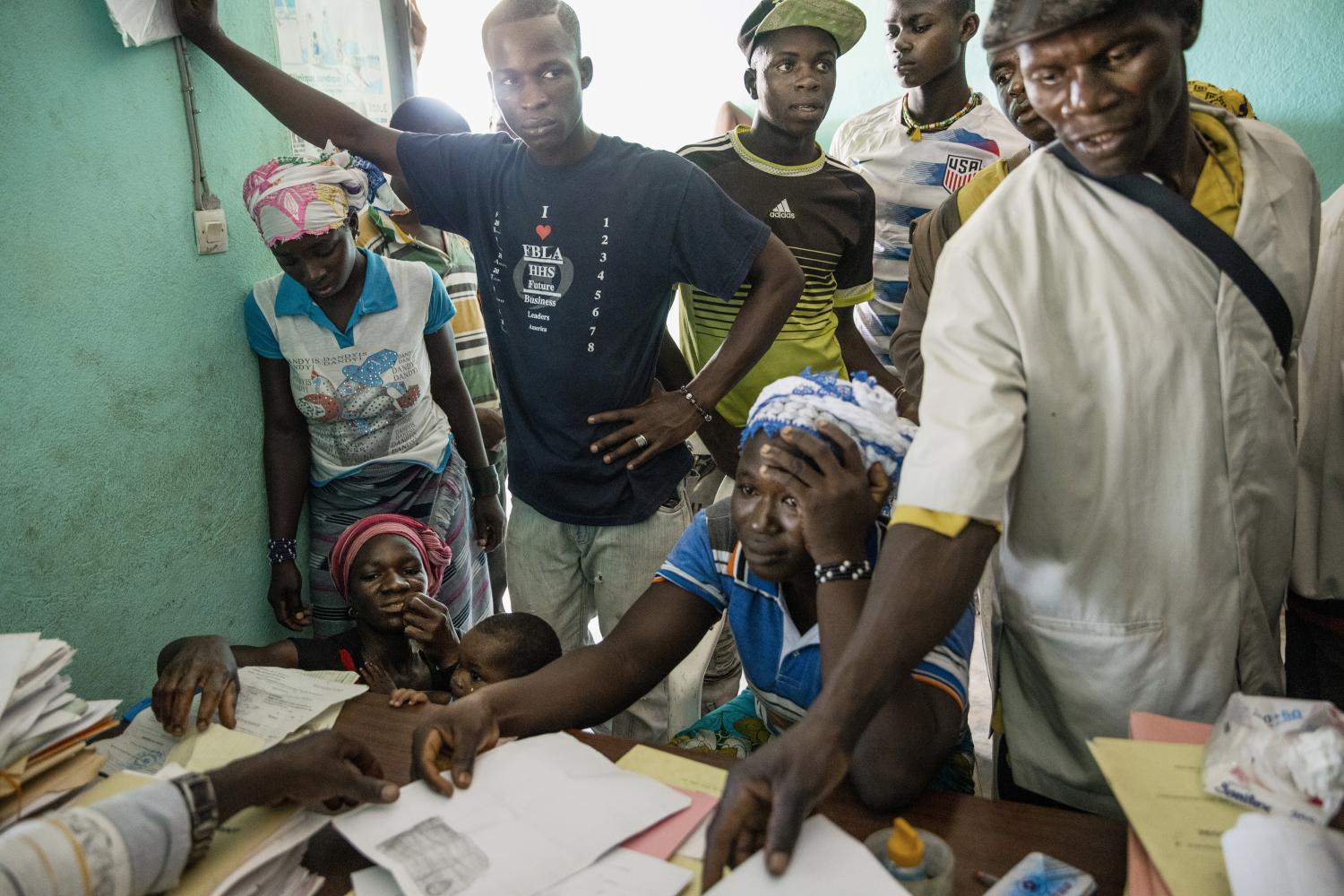
Ganaoni, Ivory Coast People try to get a birth certificate or nationality certificate from an administrative agent. In this region, many people lack documentation and are "at risk of statelessness", although most of them of Ivorian origin. According to UNHCR, they face the same problems as stateless people from foreign countries. Their lack of documentation means they are unable to make administrative formalities, buy land, buy a motorbike, go to school beyond grade 5, they can't vote and they are much more likely to be questioned by the police.
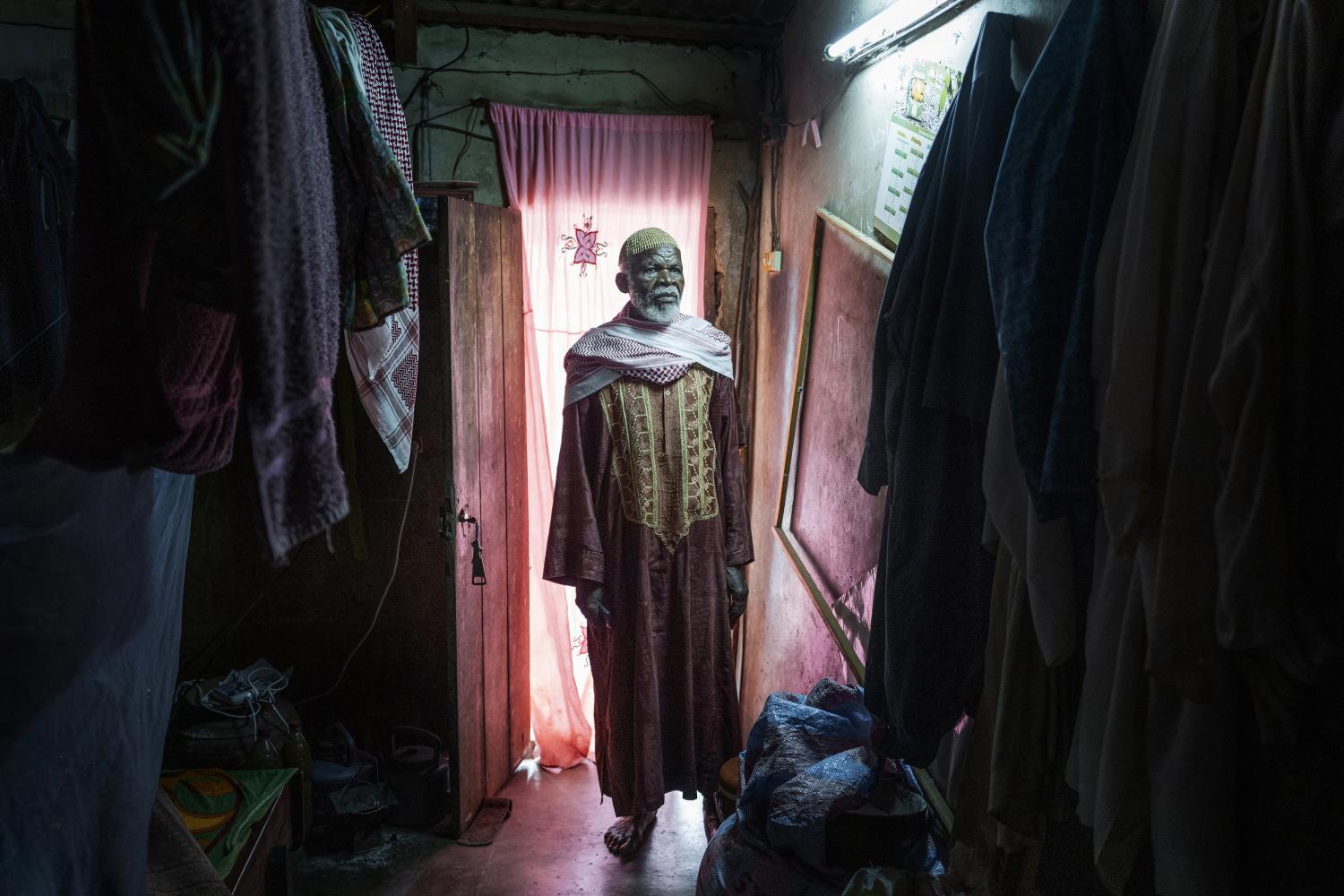
Moussayo, Ivory Coast Babodo Salam in his home. He was born in 1946, during French colonial time, in what is today Burkina Faso. He came with his parents in 1957 to the Ivory Coast to work in the plantations, like hundreds of thousands workers. Today, he still doesn't have the Ivorian nationality and his 20 children and grand children don't have Ivorian nationality although all of them were born in the country. In 1972, anti-foreigner sentiment led to a change in nationality laws, granting citizenship through right of blood rather than right of soil. Overnight, hundreds of thousands became stateless. As the economy crashed, the issue of who is or is not Ivorian fueled two coups, a controversial election, and a civil war in 2001 that split the country between north and south.
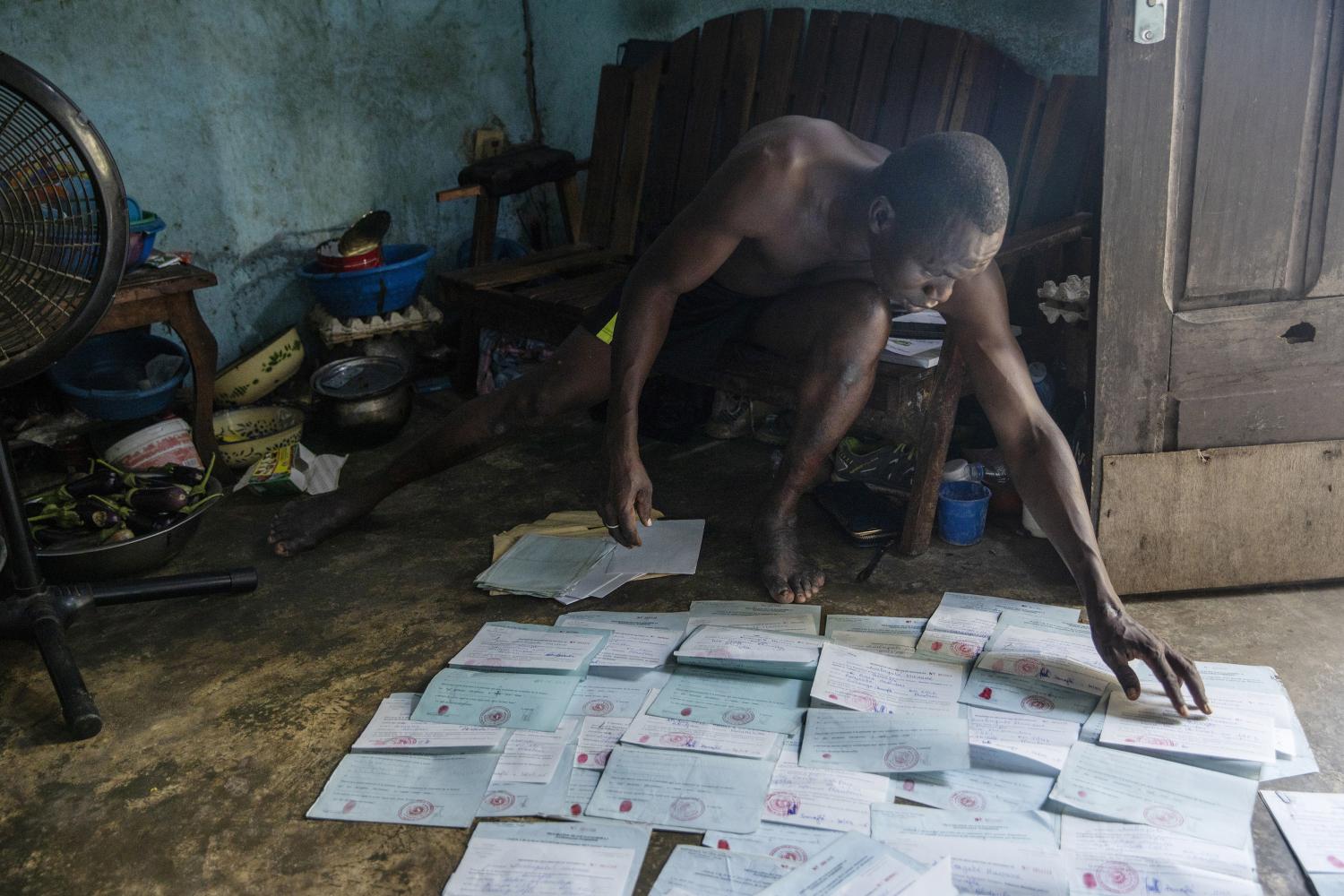
Garango, Ivory Coast Mr Bila lays out some of the citizenship applications that he sent in 2014 and 2015 but never received any answer. They probably contains irregularities but according to him some were refused because some judges refuse to grant nationality to people with foreign origins. In 2013, a decree authorised some "Burkinabes" with strong roots in the country to apply for Ivorian nationality but only a few were granted it.
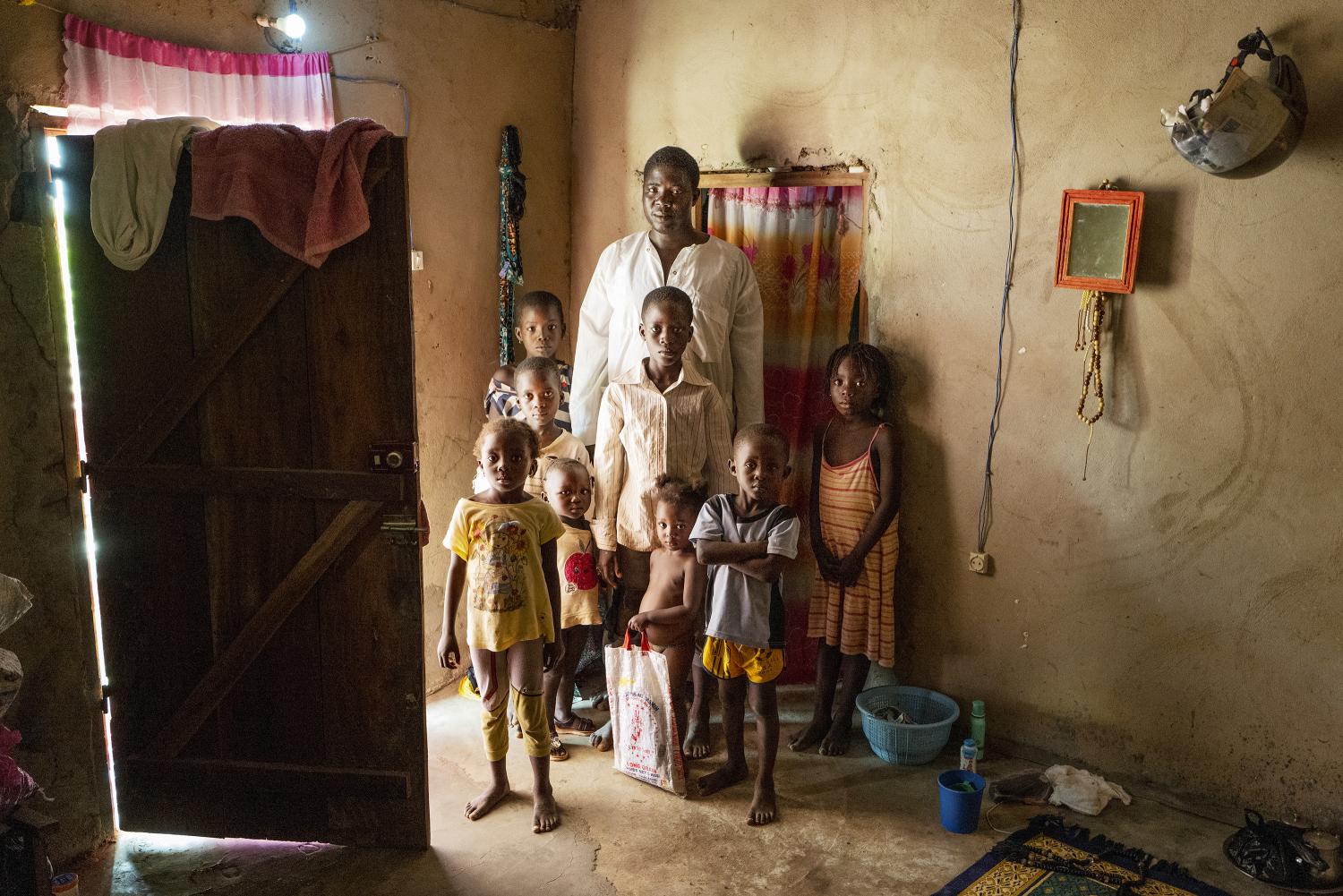
Garango, Ivory Coast Sino Lassana in his house with some of his nine children. He says he was born in 1971 in Garango of parents who came during the colonial-era time to work. He sent a nationality application in 2014 but never received a response. His children have birth certificates but they are at risk of statelessness because their parents lack documentation. Garango takes its name from the city of Garango, in the actual Burkina Faso, where the first migrants were from. There are 25,000 residents in the village, mostly descendants of the first inhabitants and according to the head of the village 3,000 lack documentation and are at risk of statelessness because of their origins. People complain of police harassment which they say, is worse if they have a name that sounds Burkinabe.
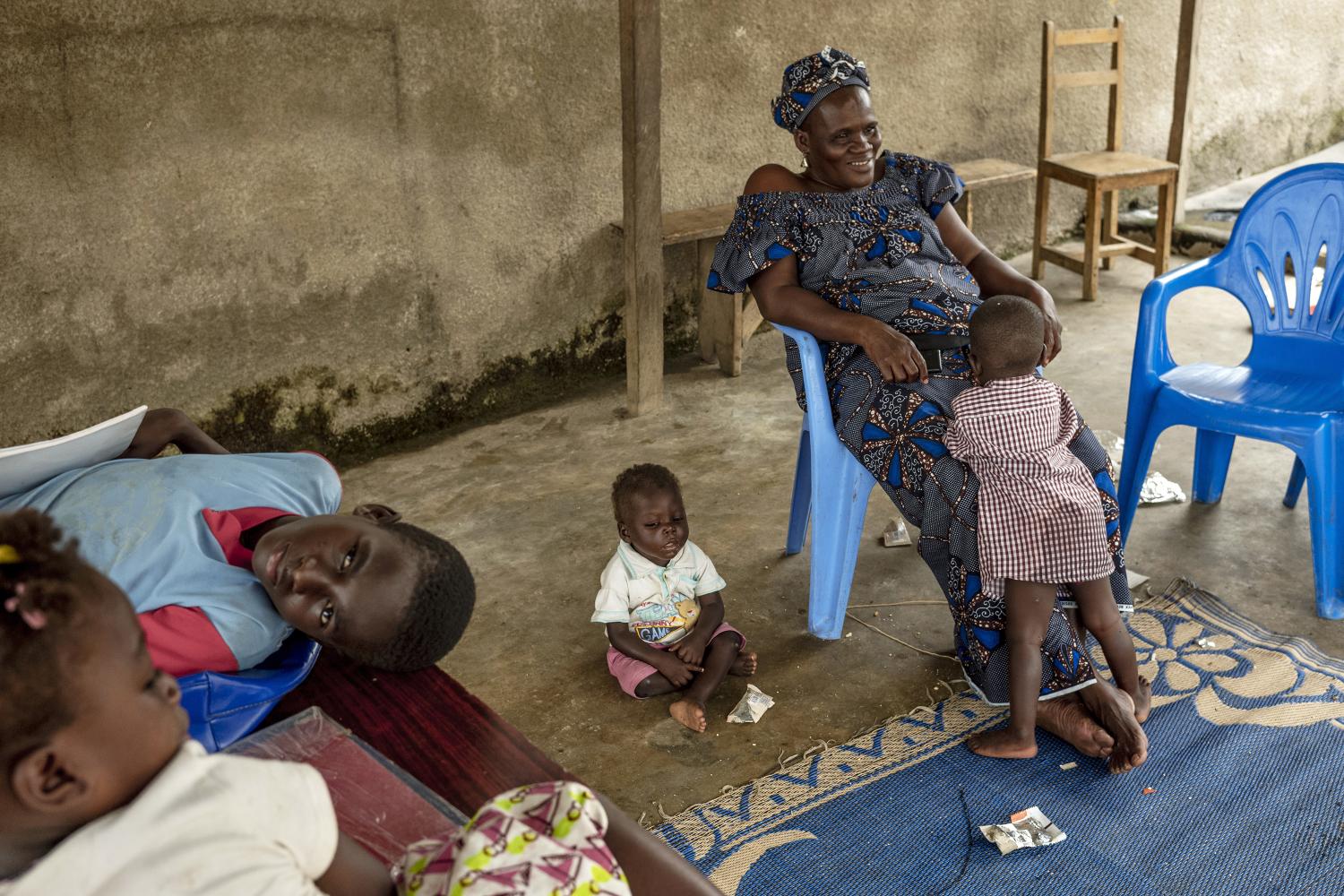
Soubre, Ivory Coast Compassion Esther with some of the 'enfants trouves' (children found) she looks after. These children of unknown origins, orphaned or abandoned by their Ivorian or foreign parents, because they were unwanted, disabled, or because their family was too poor to raise them, constituted until recently populations at risk of statelessness. In 2019, the Ministry of Justice issued a circular to them allowing them to be recogniszed as citizens of the country, but the procedure is complicated and costly.
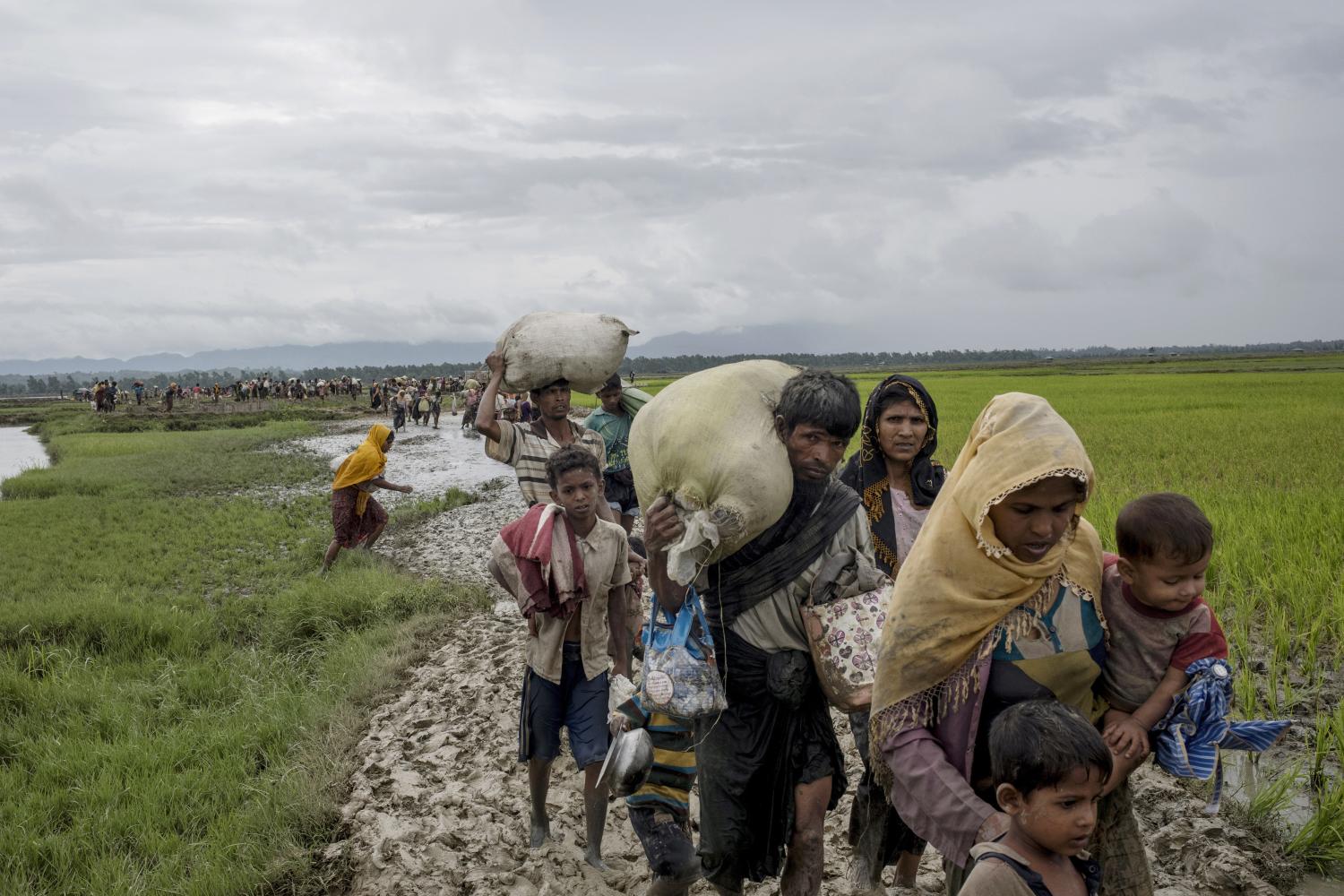
Nr. Cox's Bazaar, Bangladesh Rohingya refugees, carrying a few possessions in sacks, walk through a muddy rice paddy field after fleeing across the nearby Myanmar border. The Rohingya is a persecuted minority from Myanmar. They became the biggest stateless population in 1982 following a law obliging them to prove their presence before British colonization to obtain nationality. Many of them have fled the country in successive waves over the last 40 years to take refugee in Bangladesh.
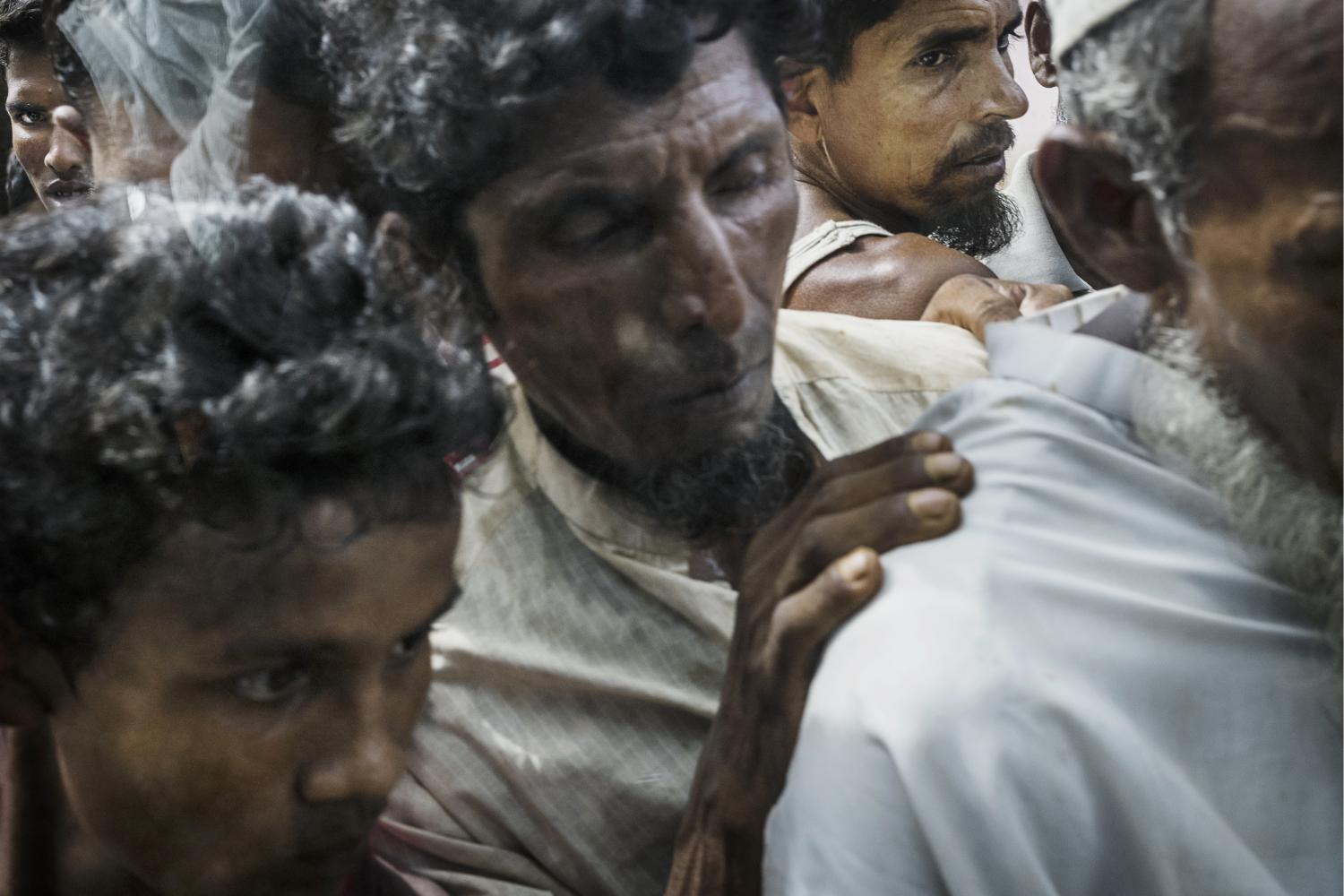
Near Kutupalong refugee camp, Bangladesh. Rohingya refugees, packed around a car, are queuing to get some food from the World Food Program. The United Nations reported that Rohingya refugees had crossed the border from Myanmar into Bangladesh fleeing a campaign of terror by the Myanmar military and described the military action as 'a textbook example of ethnic cleansing'.
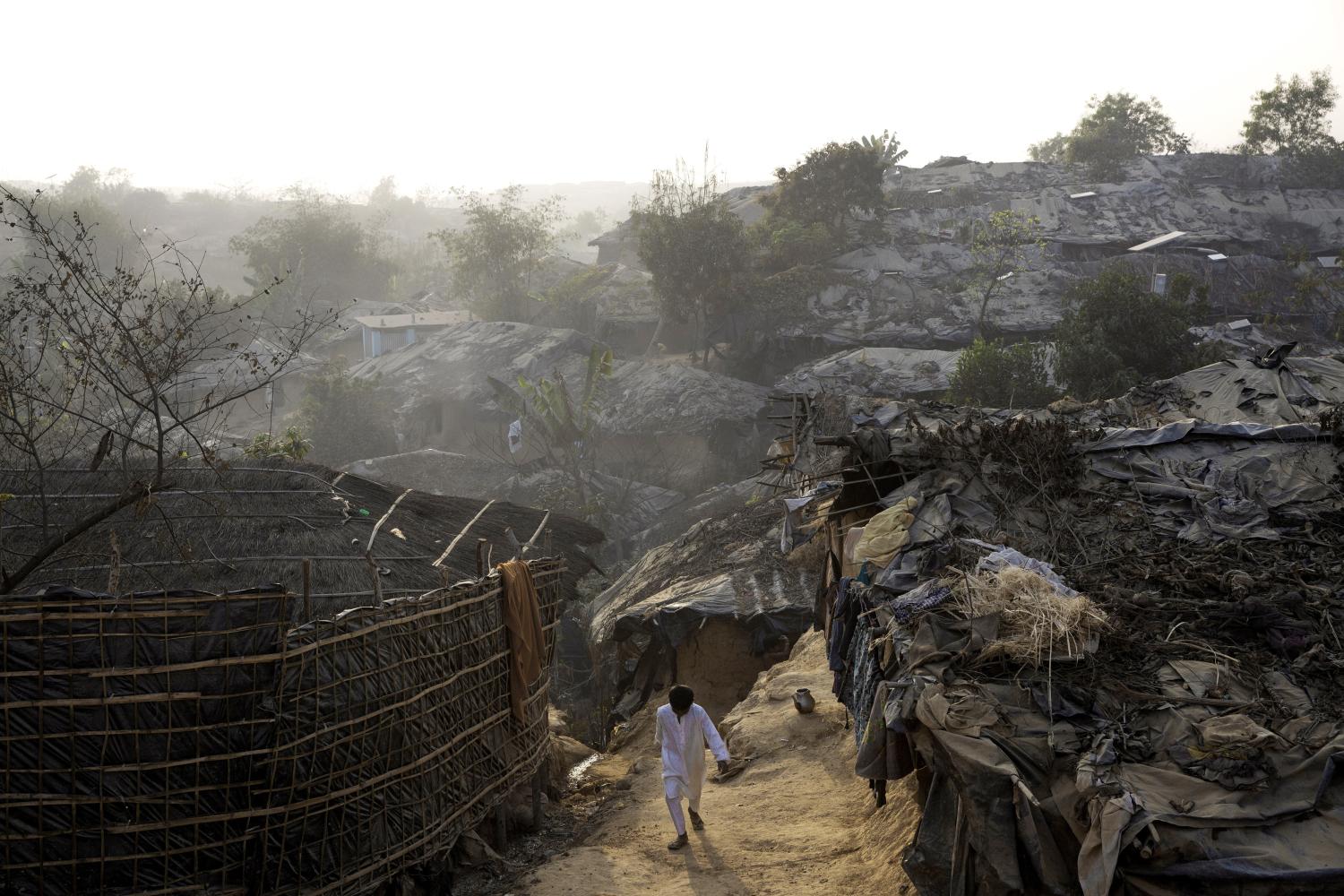
Cox's Bazar, Bangladesh A Rohingya child walks through Kutupalong refugee camp. This part of the camp houses refugees who arrived in the last three decades. In 2017, the camp became the largest in the world housing more than half a million people.
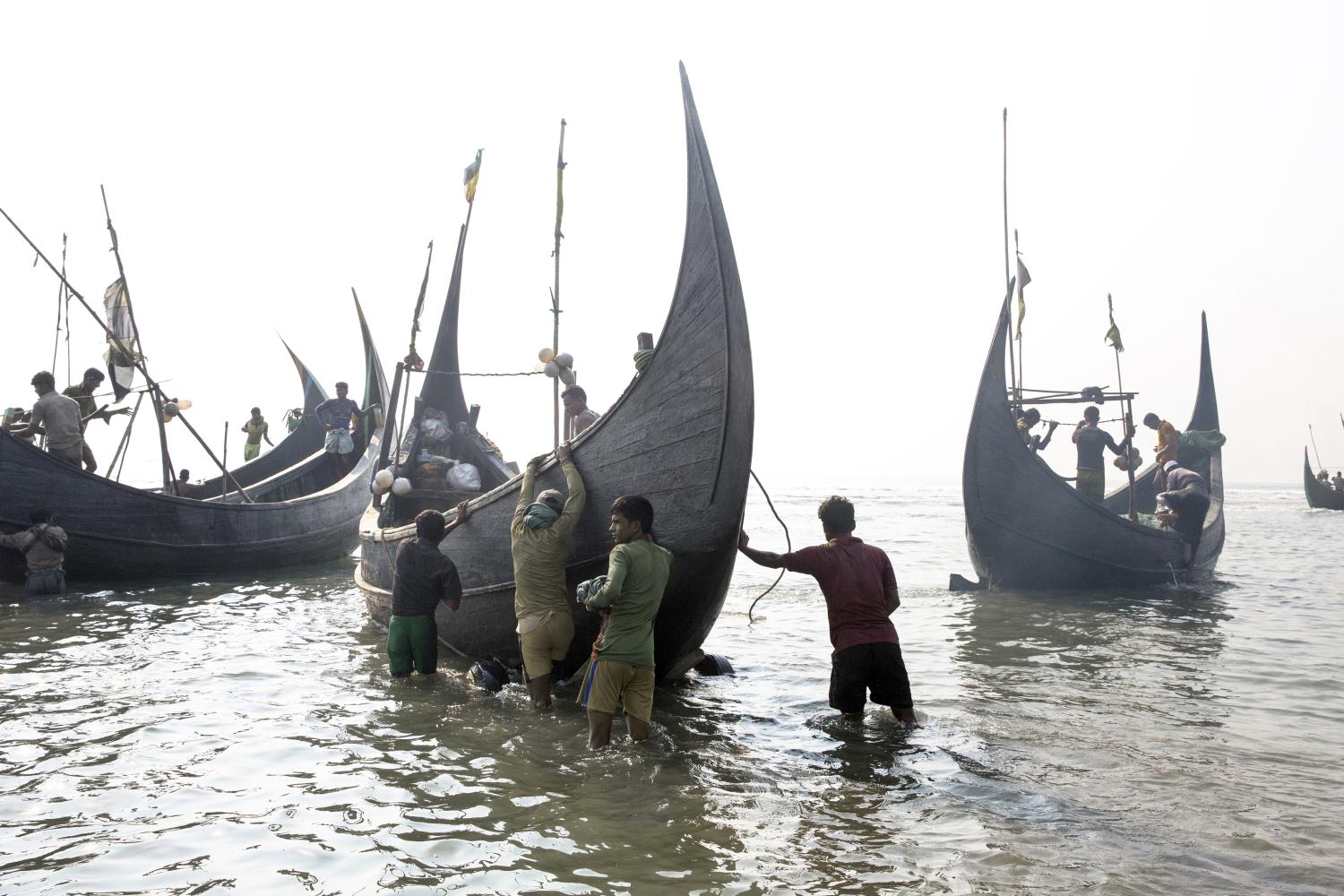
Shaplapour, Bangladesh Rohingya refugees working as fishermen on the beach at Shaplapour. Some of them have been living in Bangladesh for decades. According to a fisherman who employs some Rohingya, they are paid the same amount than a local but they work harder and better. They are considered as very good sea men.
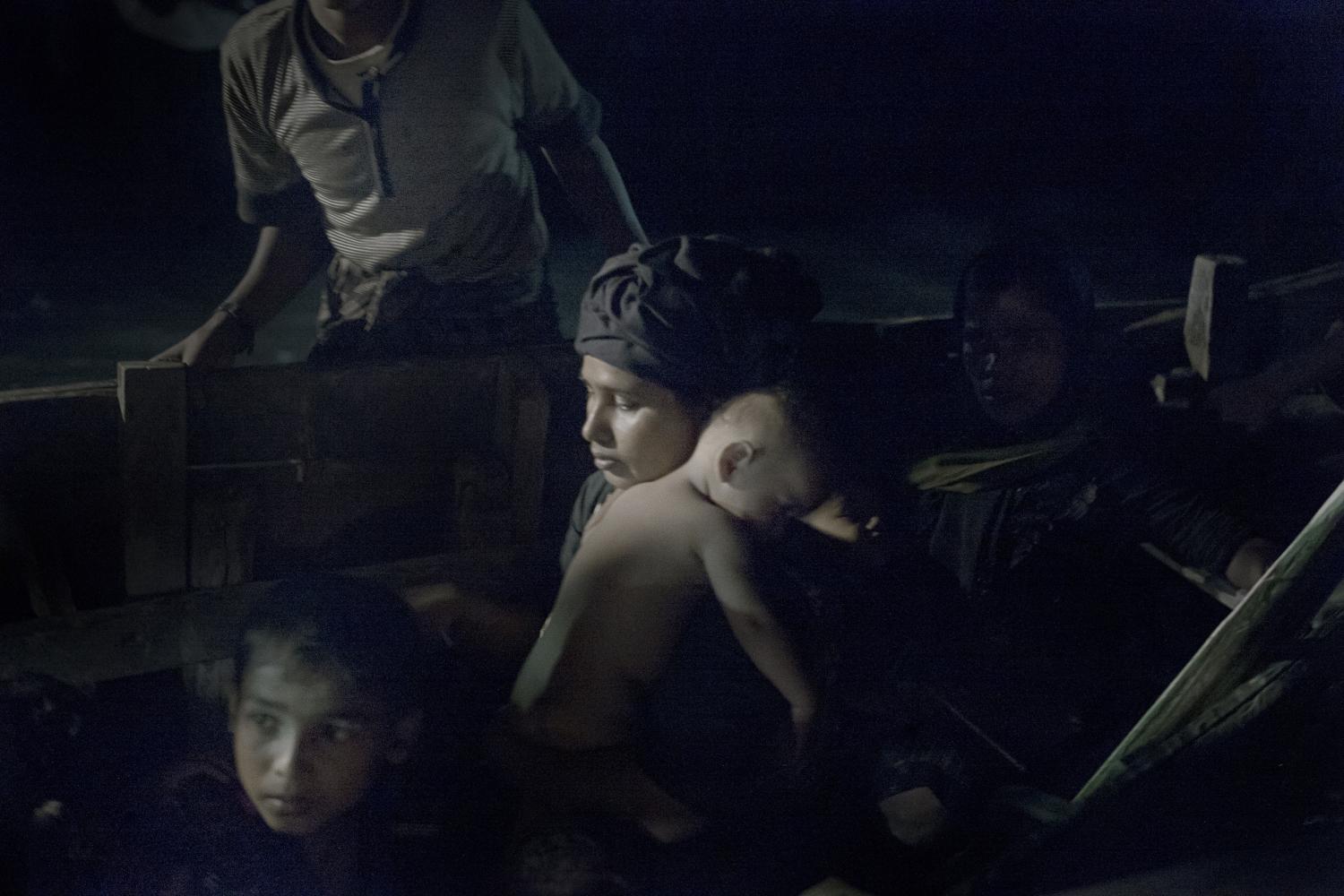
Shahpuri island, Bangladesh. Exhausted and choked Rohingya refugees arrive by boat at night on the shore of Shahpuri island, which is nestled at the mouth of the Nat river. They are fleeing Myanmar at night to avoid being shot at by Myanmar military. Since October 2016, about 700,000 Rohingya Muslims had crossed the border from Myanmar into Bangladesh fleeing a campaign of terror, in what the United Nations human rights chief has called “a textbook example of ethnic cleansing.”
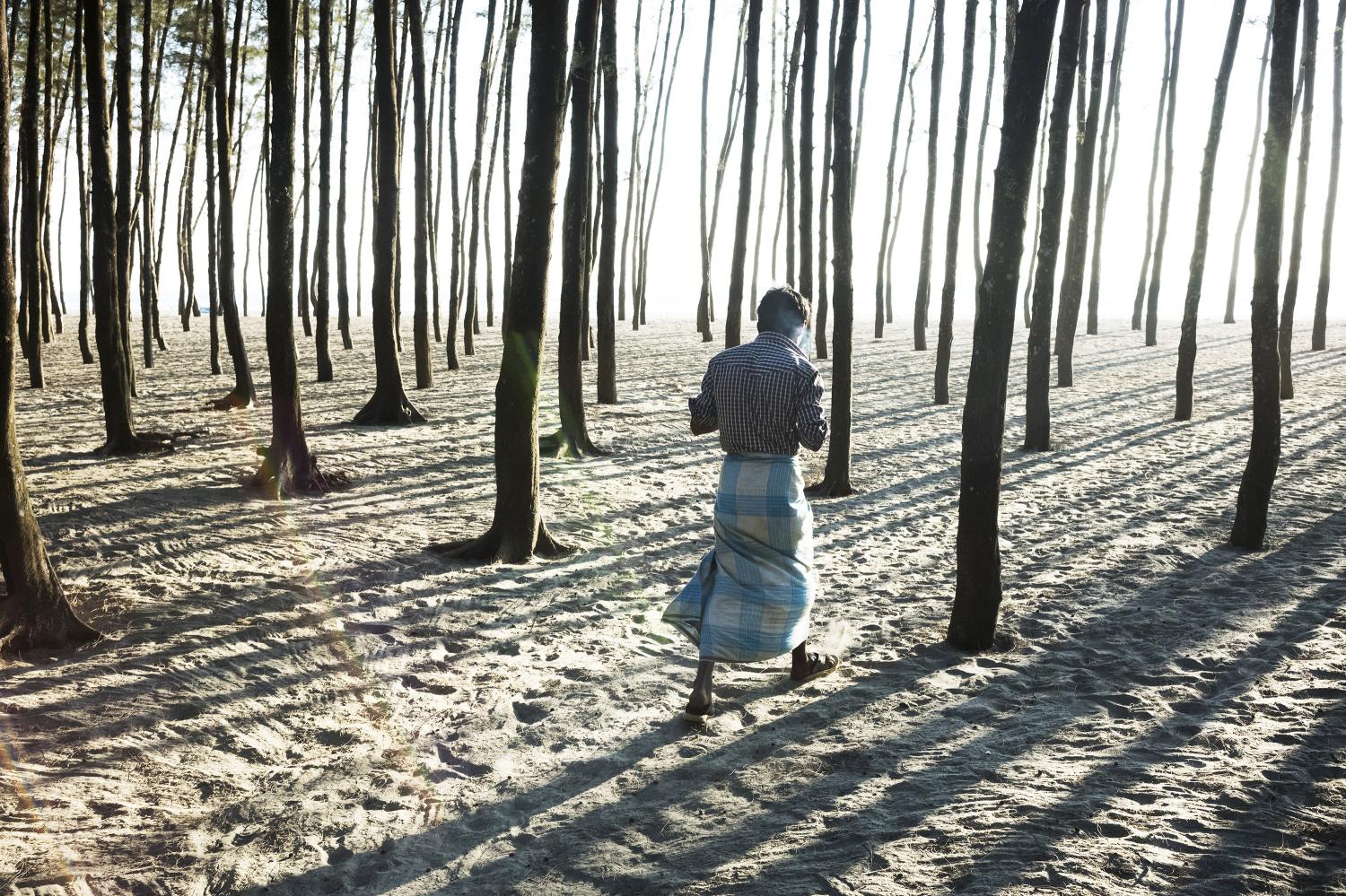
Cox's Bazar, Bangladesh A member of the Rohingya refugee community who have been living on this tree lined beach for about 15 years and scratch a living from fishing. The trees were planted to protect from storms and sea rising.